Croatian Photographic Tour
Join Peter on a Streetscape and Landscape Photography tour in beautiful Croatia. It starts in one of the most amazing places, the Plitvice Lakes National Park and then it's a street photography tour at its best with a backdrop of the stunning surrounds of the Mediterranean Sea. Peter is fluent in Croatian (including dialects).
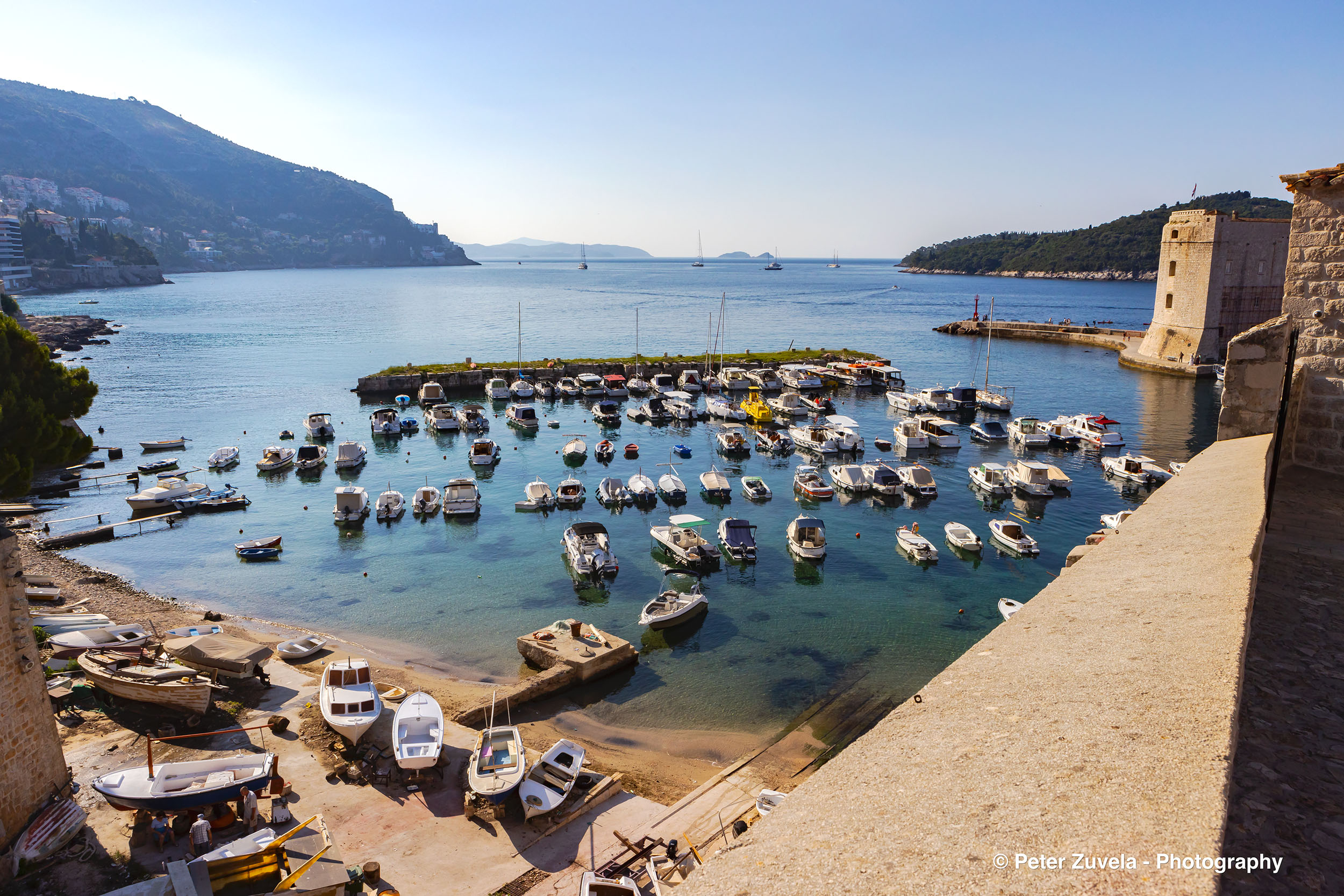
View of Dubrovniks's old port from the walls
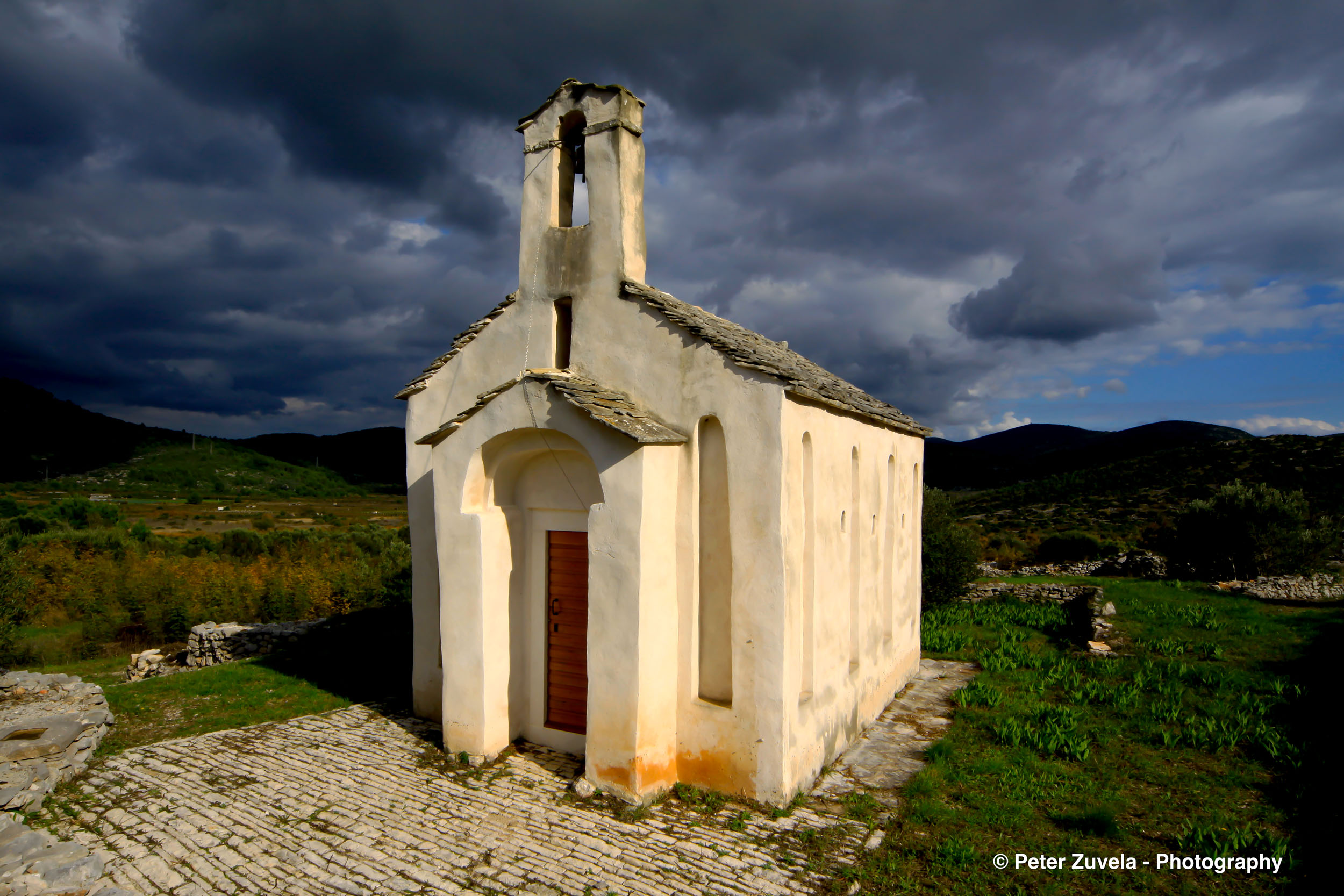
The Chapel of Saint Cosmas and Saint Damian

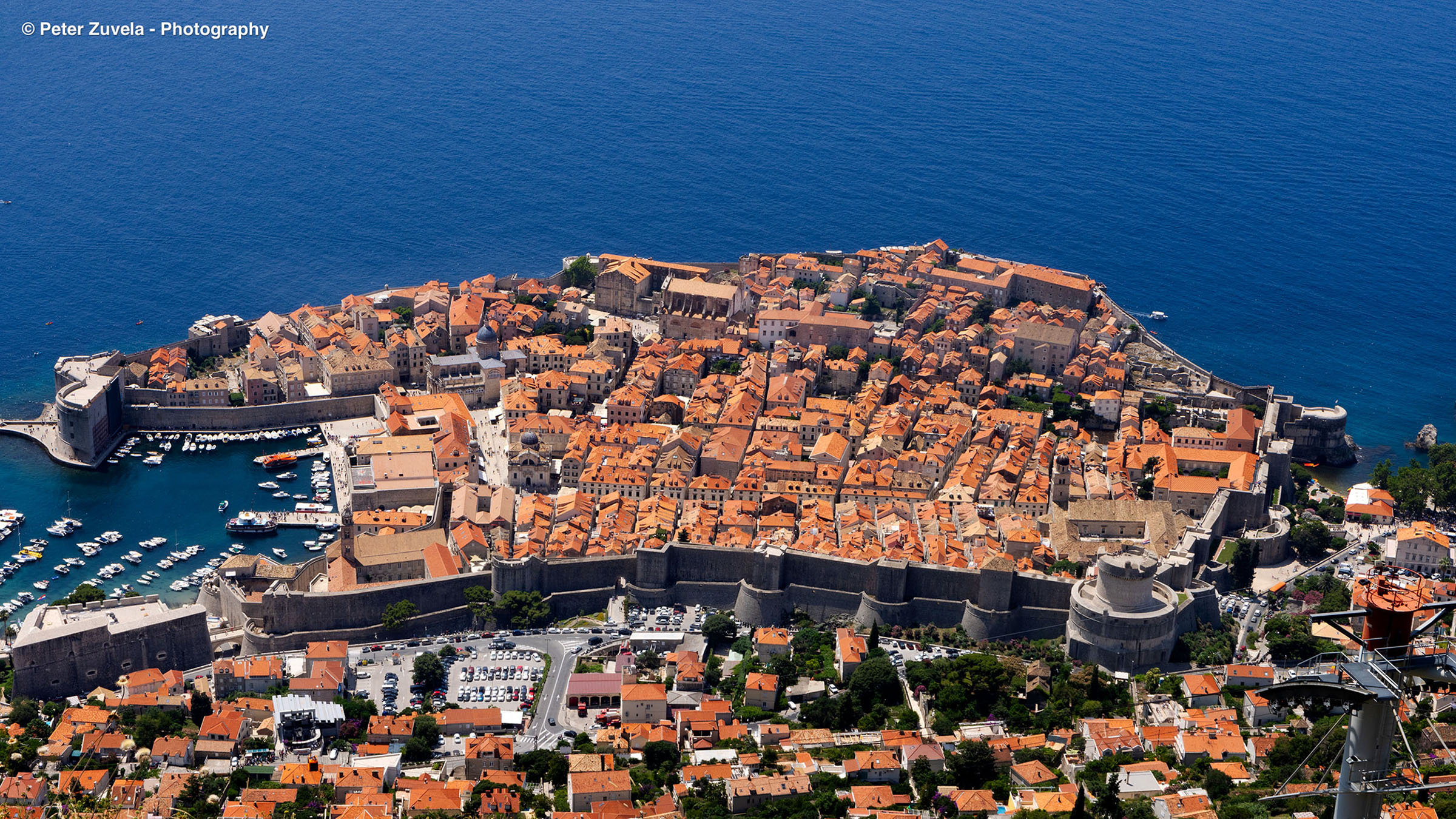
City of Dubrovnik viewed from Mt Srd
- Plitvice Lakes National Park: Accommodation 3 nights
- Split (old town): 2 nights
- Korcula Town (Korcula island): 3 nights
- Dubrovnik (old town): 3 nights
Total: 11 nights
The day before the photo tour begins it is optional for participants to meet in Zagreb at Ban Jelačić Square (24/09/2025) at the bronze sculpture of the large of Ban Josip Jelačić (Jelacich) on a horse. The work was created by Austrian sculptor Anton Dominik Fernkorn. From there we go for lunch.

Statue of Ban Josip Jelačić
A visit to St Mark’s cathedral and streets around the old markets offers many photo opportunities. Other parts of note are Gradec or Gornji Grad (meaning 'Upper Town') and together with Kaptol they are the medieval nucleus of the city. It is situated on the hill of Gric.
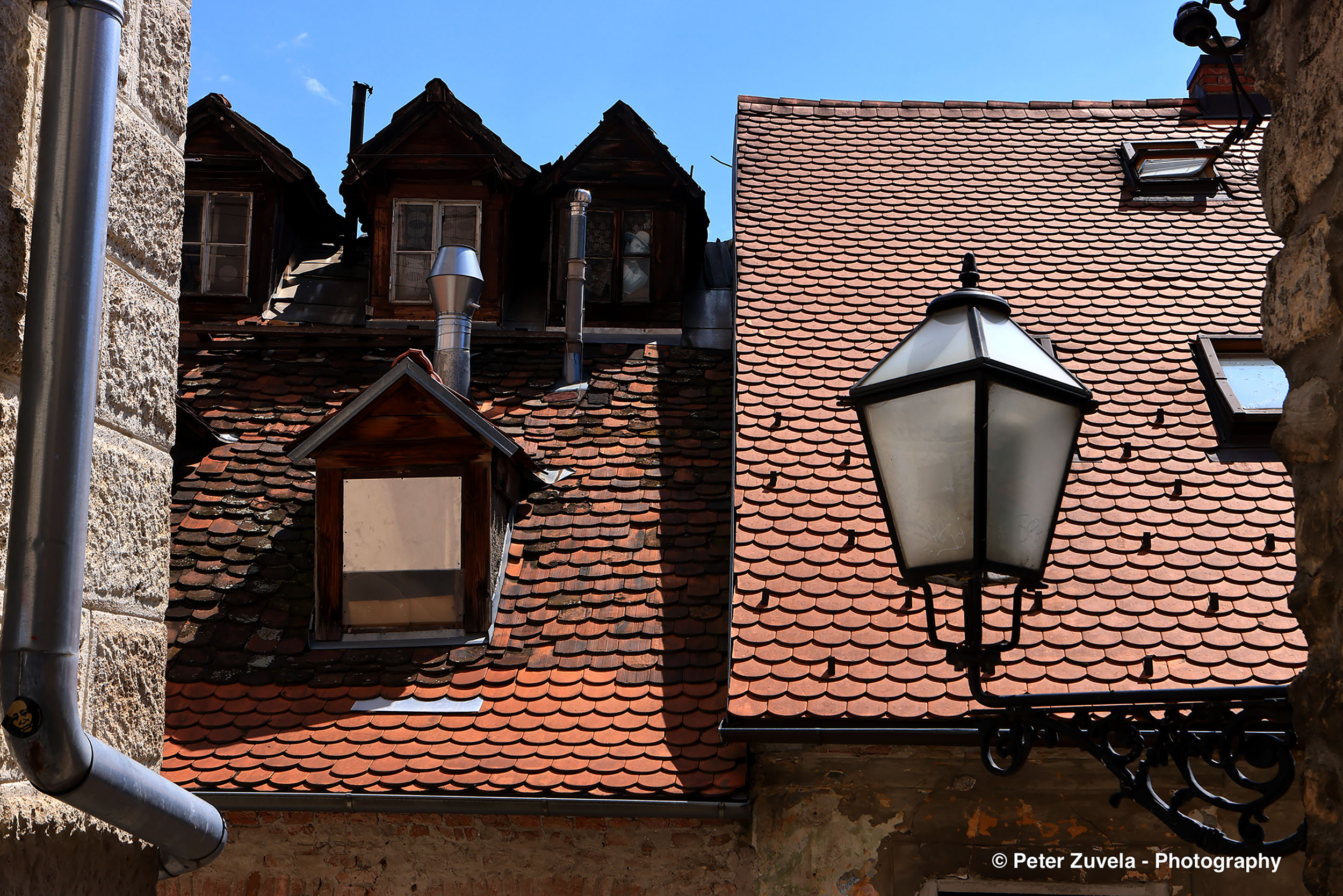
Roofs of old town of Zagreb
DAY 1 (start of the photo tour) 25th of SEPTEMBER – THURSDAY
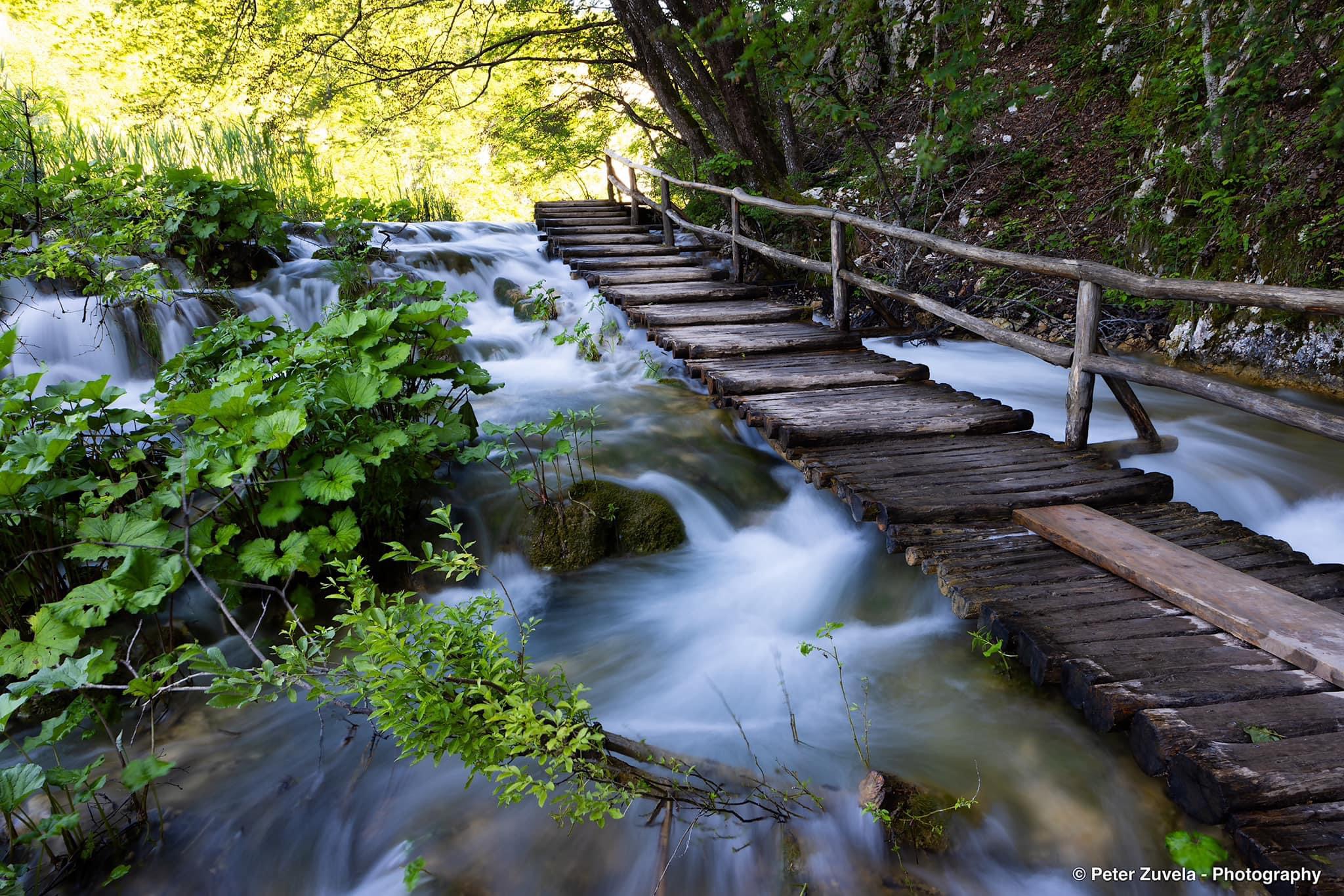
When exploring the park on many of the dedicated walkways and bridges with abundant look out points, you will marvel at the crystal-clear water with strong turquoise hues and the amazing number of magnificent waterfalls and pools. It is a joy to explore with photo opportunities around every corner.
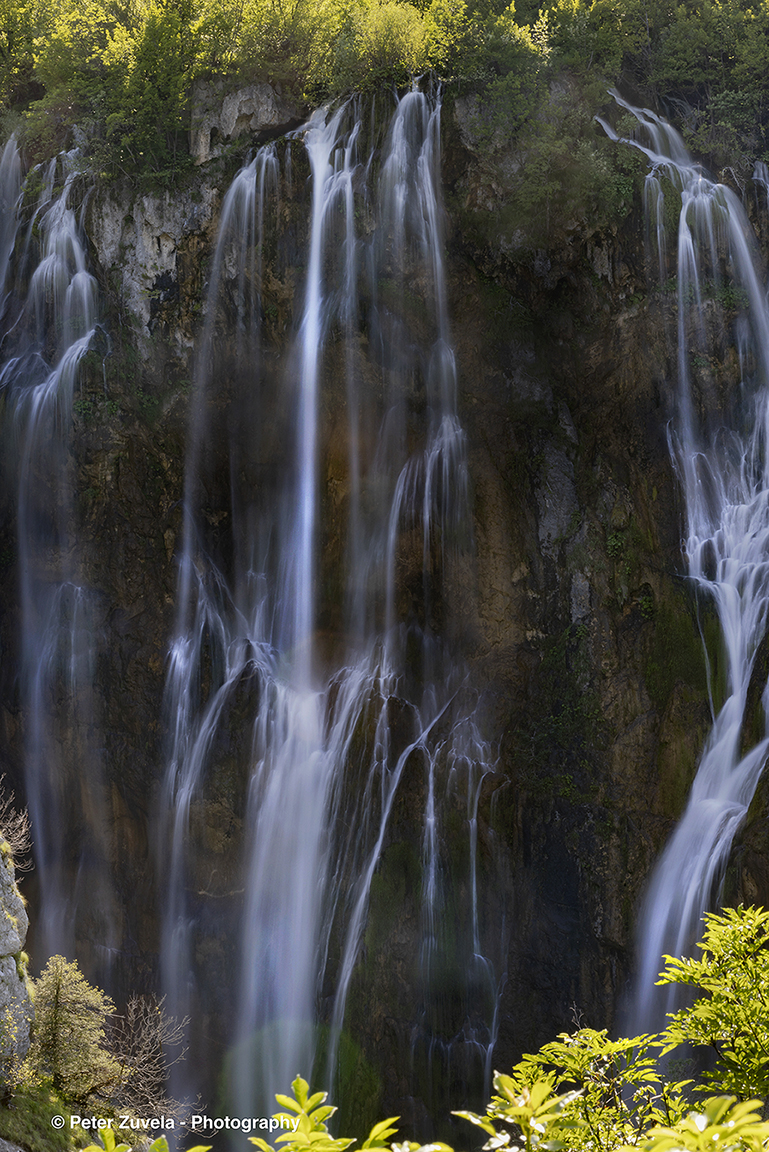
Plitvice Lakes National Park
DAY 3 27th of SEPTEMBER – SATURDAY
Another Photo excursion into the park to further explore the water ways, pools, waterfalls and beautiful green foliage and trees with reflections and mirror images in the water. We will do a photo excursion into the National Park with a morning shoot at the Big Slap Waterfall. Great opportunities to try different photo techniques searching for a stunning image to capture the sheer beauty of this unique natural location.
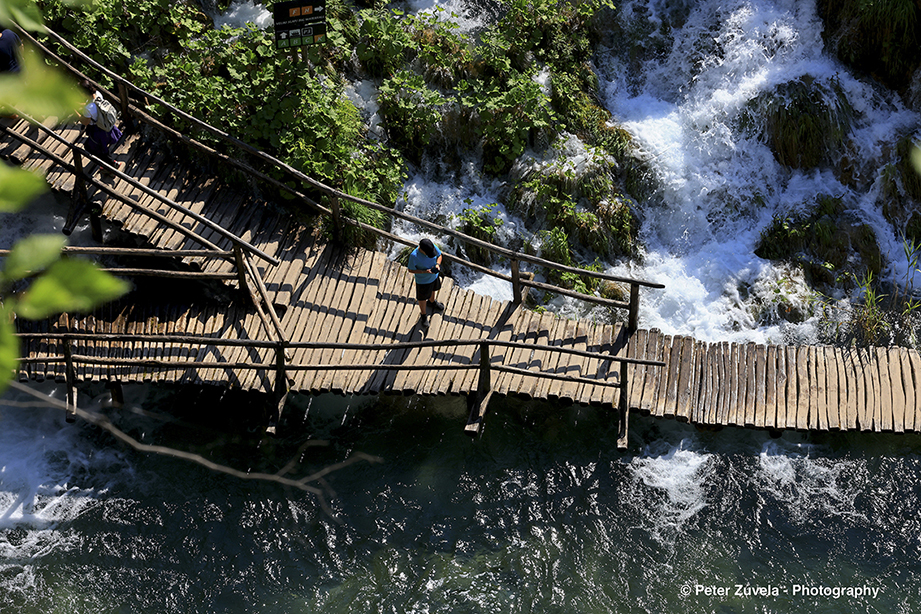
Plitvice Lakes National Park
The walkways take you up a meandering series of paths around lakes and waterfalls to the high points in the park and then descending again through a water wonderland with look-out vantage points to offer panoramic views of nature in its pristine splendour.

SPLIT historically Spalato or Spalatum. Elements of Rome and medieval architecture
DAY 4 28th of SEPTEMBER – SUNDAY
We take a bus journey from Plitvice Lakes National Park to the ancient city of Split further south along the coast (3.5 hrs) offering unique views of the Croatian landscape. We spend the evening settling into accommodation in the old town of Split in the beautiful old historic hotel of Kastel 1700.

Palace of the Roman Emperor Diocletian in its original appearance in 305. Reconstruction by French architect Ernest Hebrard.
This character hotel offers a glimpse into Venetian architecture with a feature being its proximity to the walls of Roman Emperor Diocletian’s palace and its location on the Strada with views from some windows out to the water.

View of the Peristyle
Split offers great opportunities to try out the local Croatian Cuisine with seafood dishes being favoured in most restaurants.
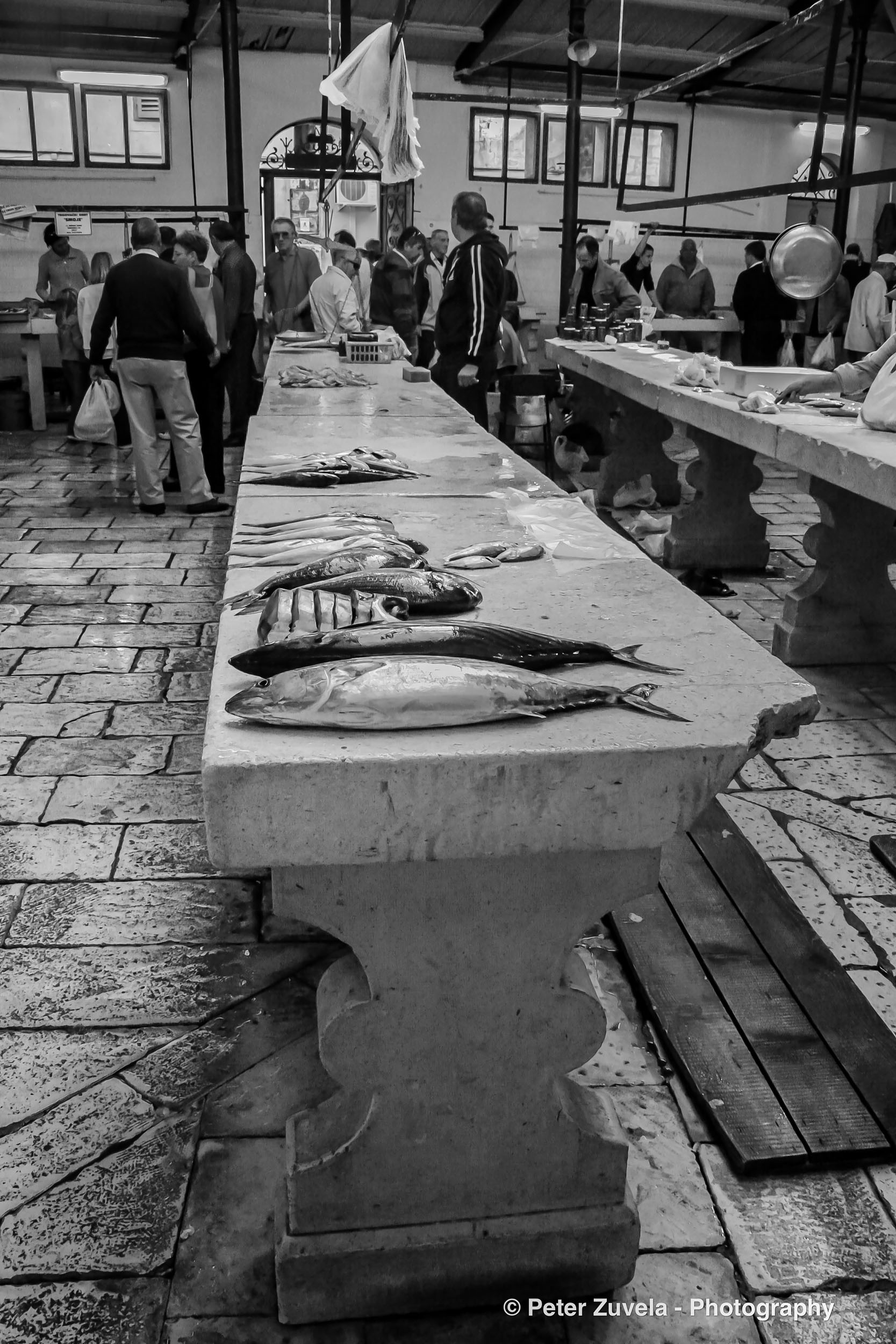
The Fish Market situated on a square next to the Marmontova Street.
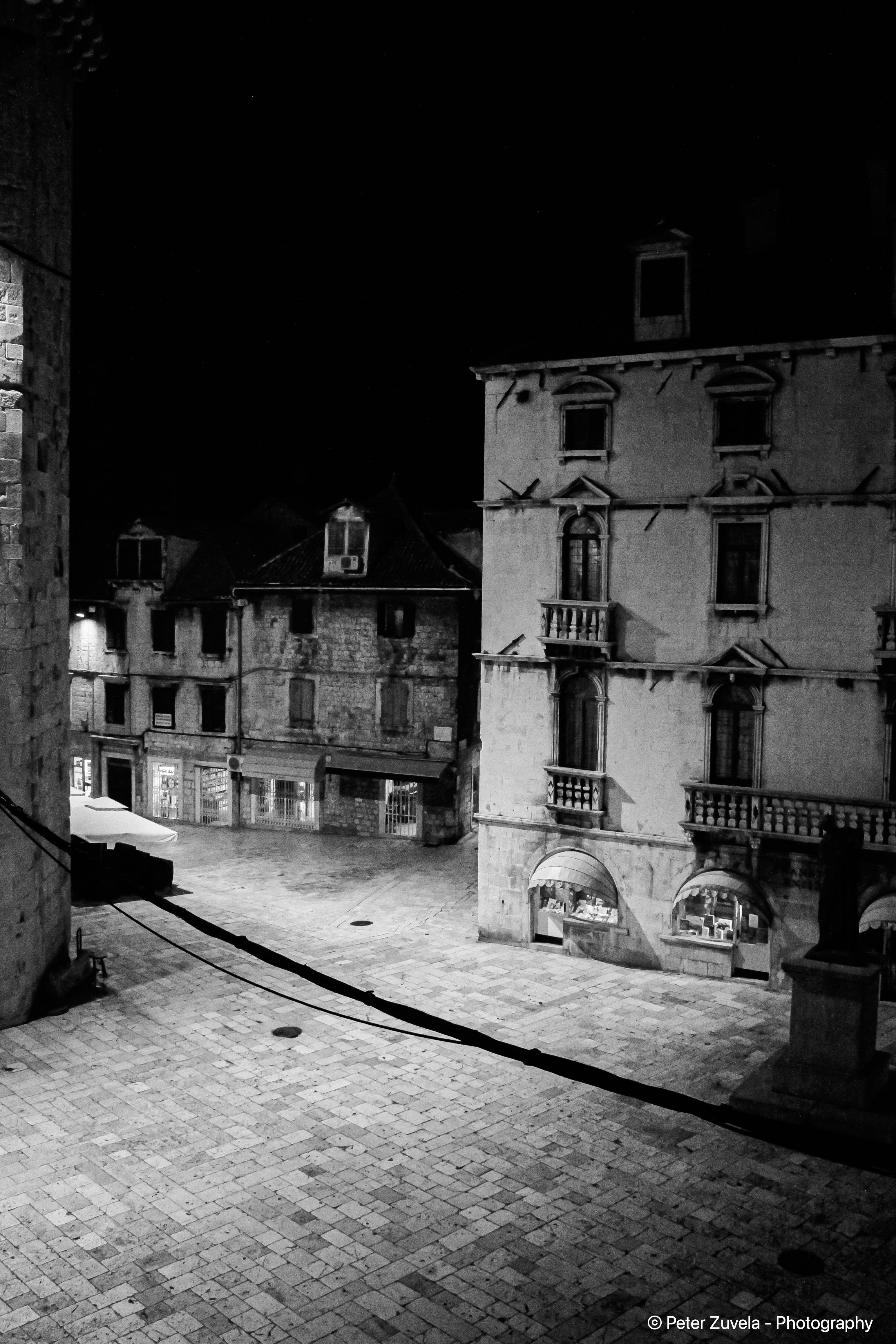
We will spend the day photographic the ancient streets scapes of the old city of Split with Roman ruins, the Peristyle, Venetian era buildings, ancient Roman fish markets, fruit markets, Jupiter’s dome, old churches and the Venetian tower offering views out over the rooftops of old Split, as well as exploring the rooms below ground of Diocletian’s Palace.
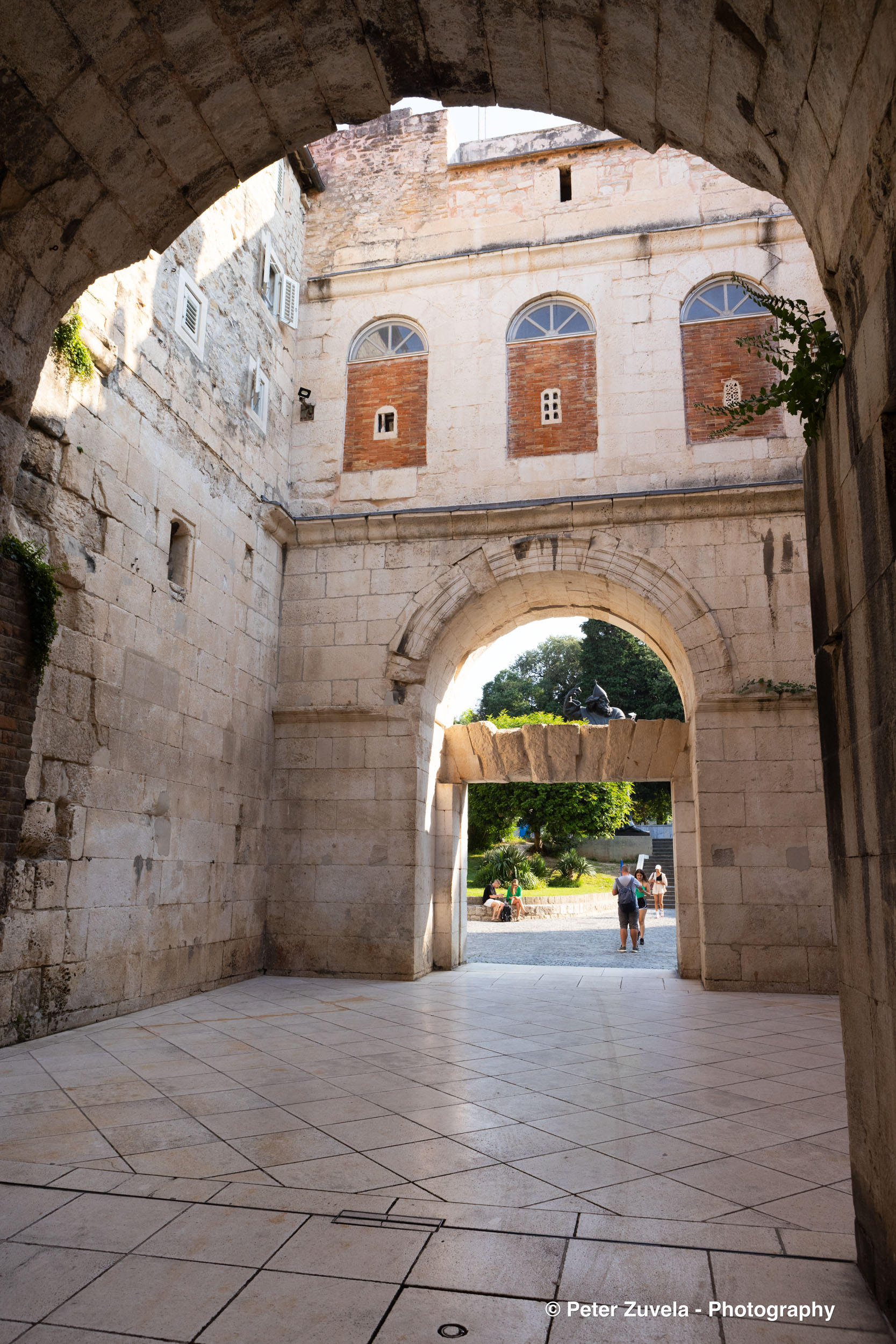
View of the Golden Gate entrance
Peter is very familiar with the old town of Split and will be able to take you to great locations that offer many photo opportunities.

The Crypt of St Lucy - Split
The streetscape photography opportunities in old Split also include capturing images of the old alleyways and shop fronts, the street performers and the groups of Klapa singers (acapella) in the Vestibule performing for the visitors to Split.

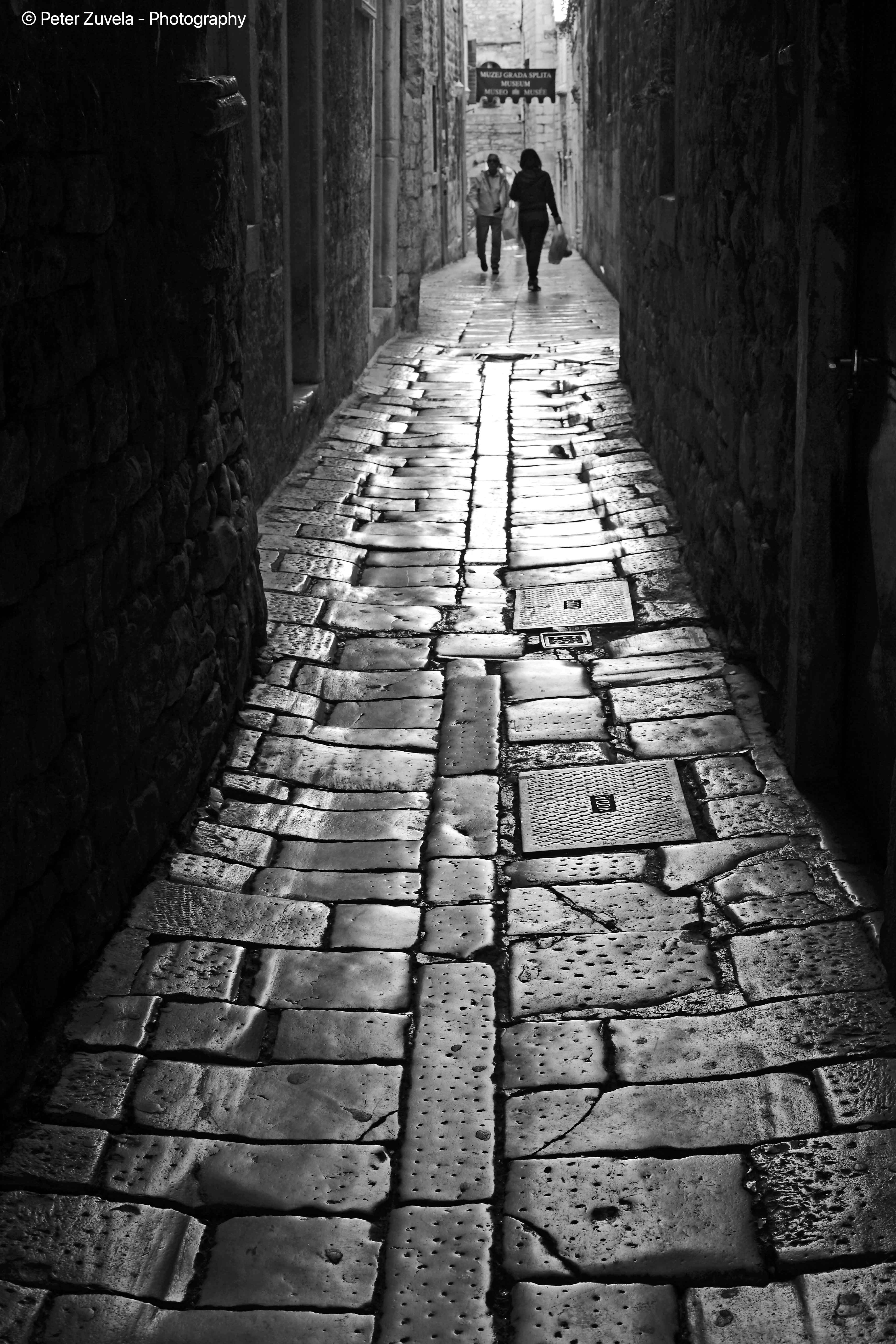
Strada (street) in old town of Split. The street is within the former fortified Diocletian's Roman Palace.
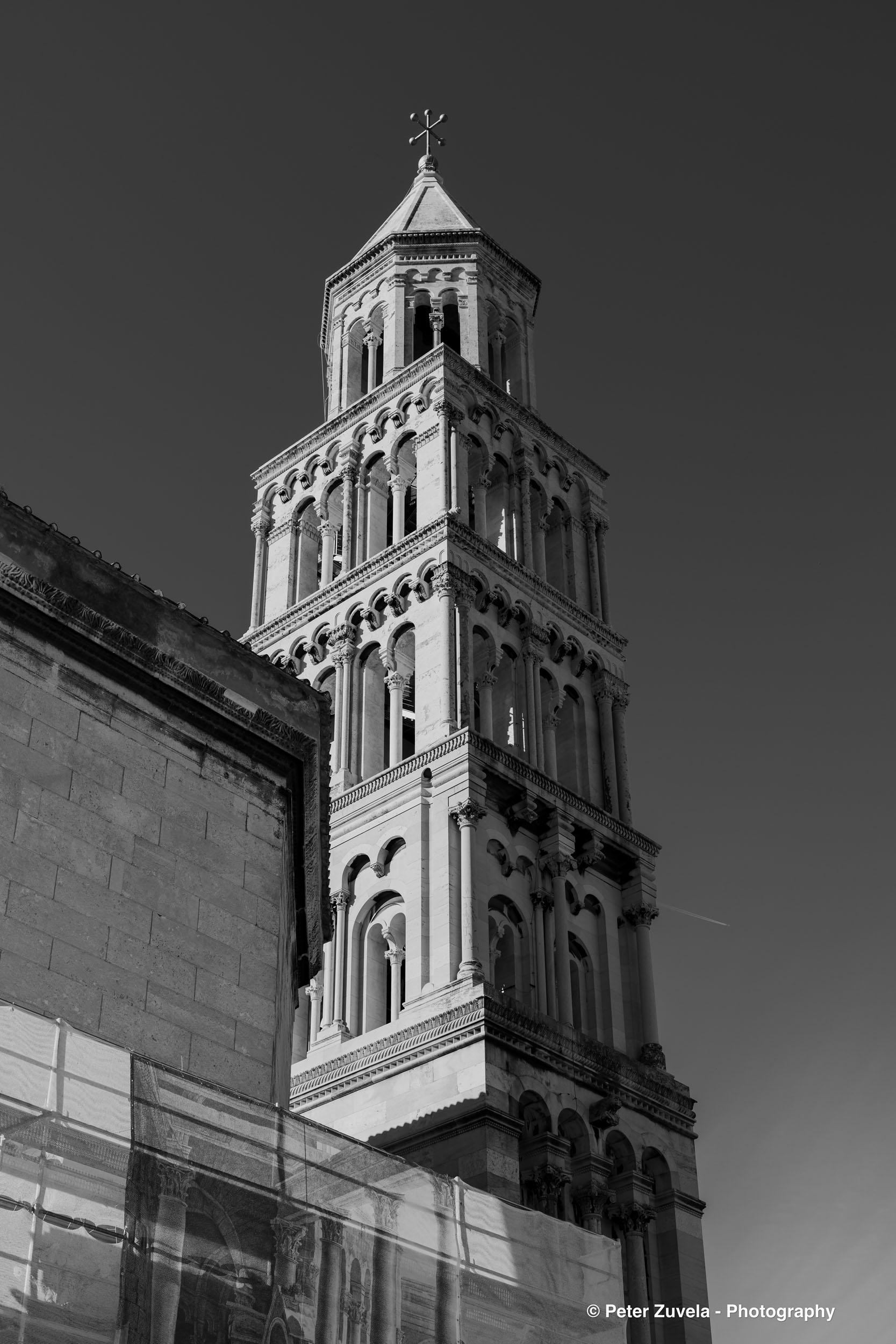
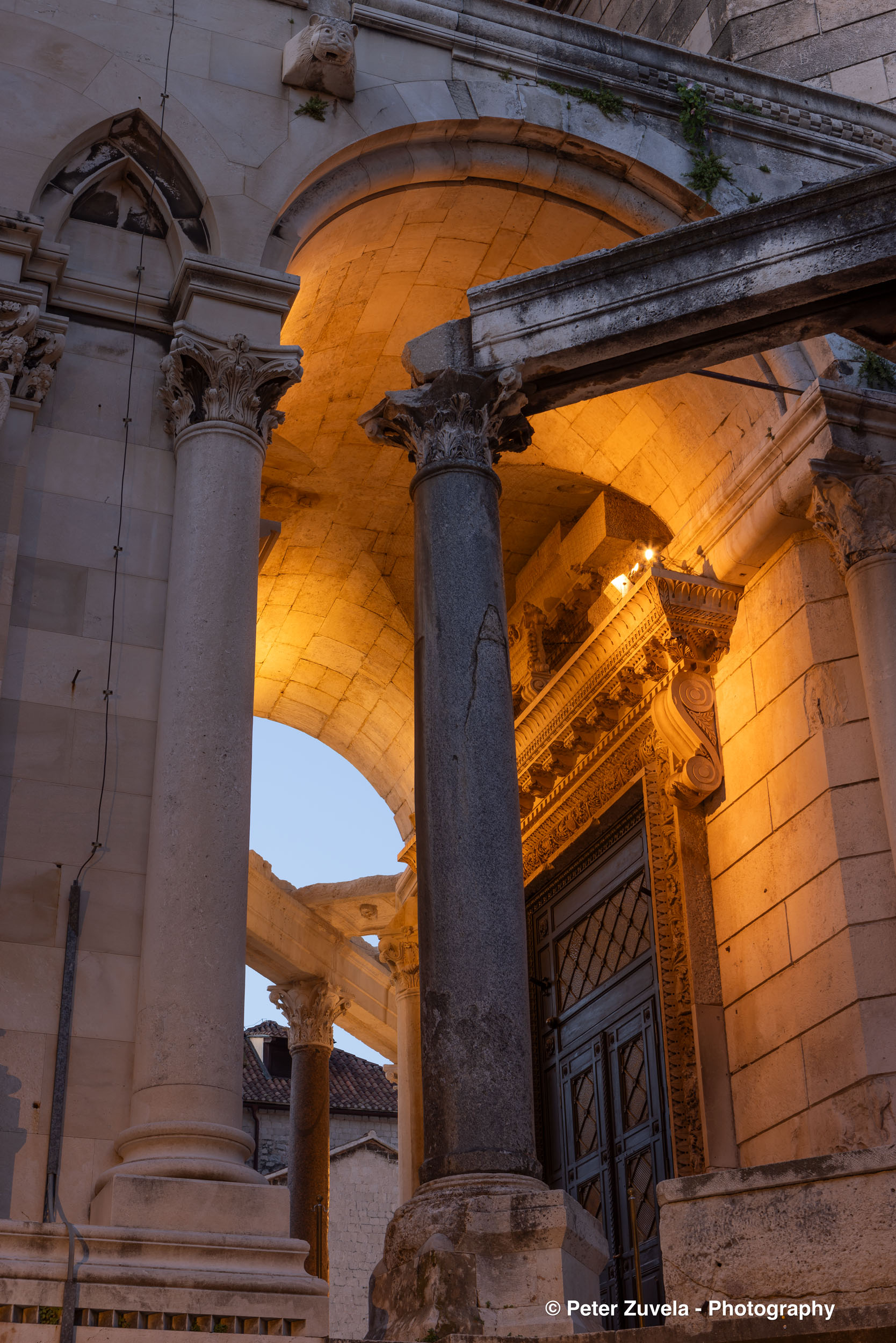
We travel by fast ferry from Split to the ancient town of Korcula on the island of Korčula (in Croatian the c in Korcula is pronounced ch and is written "č"). This town has seen many Venetian battles and invasions by pirates over its long history and is world famous for its superb stone carving on the buildings in the old town centre.

The Old town of Korčula - City Centre - St Mark’s Square (Trg Svetog Marka)

The old town of Korčula started its life as a Dalmatian Latin (Roman) town - named Corcyra. Later it became a dual Croatian-Slavic and Latin Romance town (then renamed Citta Curzola).
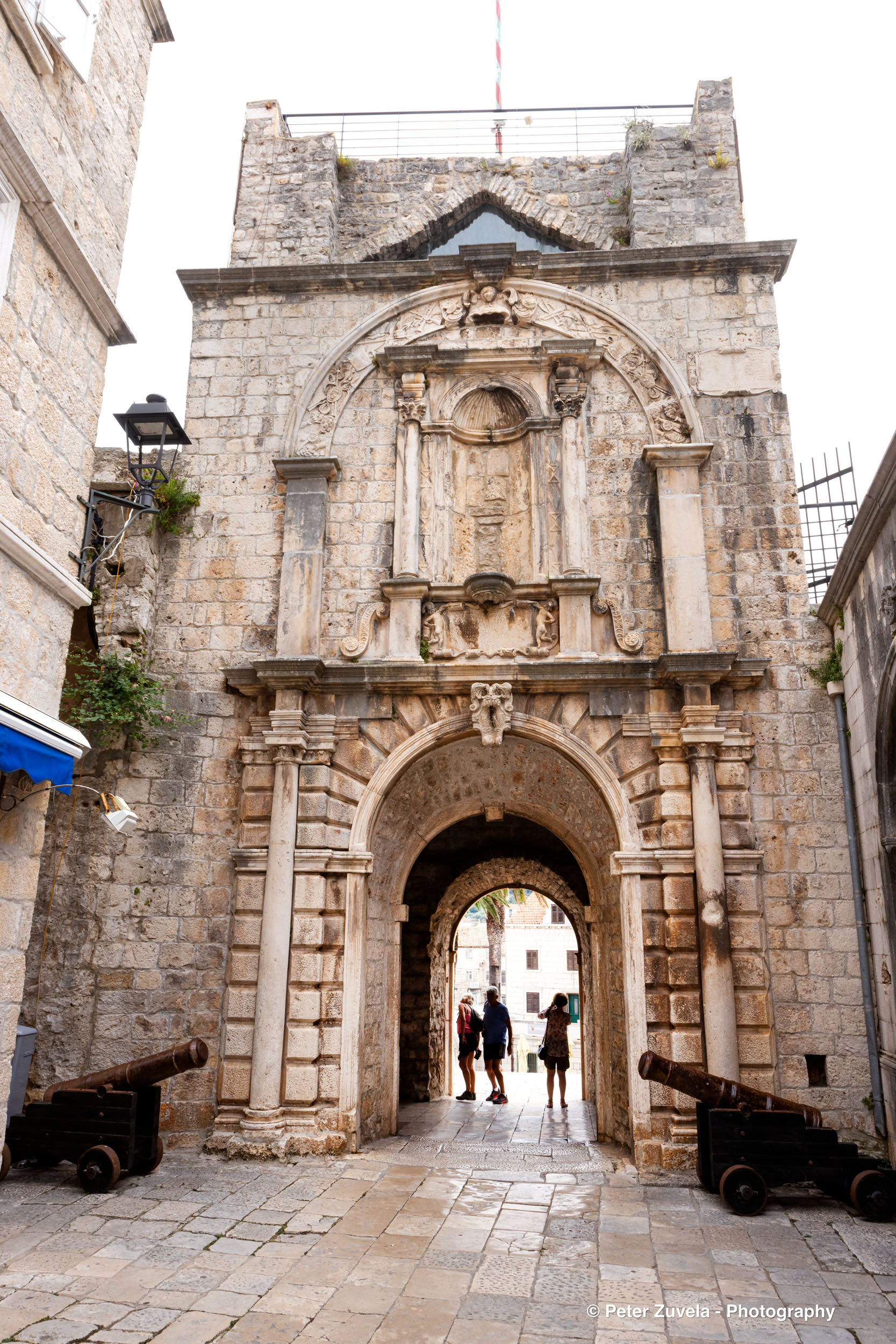
The Old town of Korčula - with a very strong feel of the Republic of Venice
Encyclopaedia Britannica's (publ. 1911): Article on Korčula (aka: Curzola) from 1911: “Besides the interesting church (formerly a cathedral), dating from the 12th or 13th century, the loggia or council chambers, and the palace of its former Venetian governors, it possesses the noble mansion of the Arnieri, and other specimens of the domestic architecture of the 15th and 16th centuries, together with the massive walls and towers, erected in 1420, and the 15th-century Franciscan monastery, with its beautiful Venetian Gothic cloister. In 1571 it defended itself so gallantly against the Turks that it obtained the designation fidelissima."
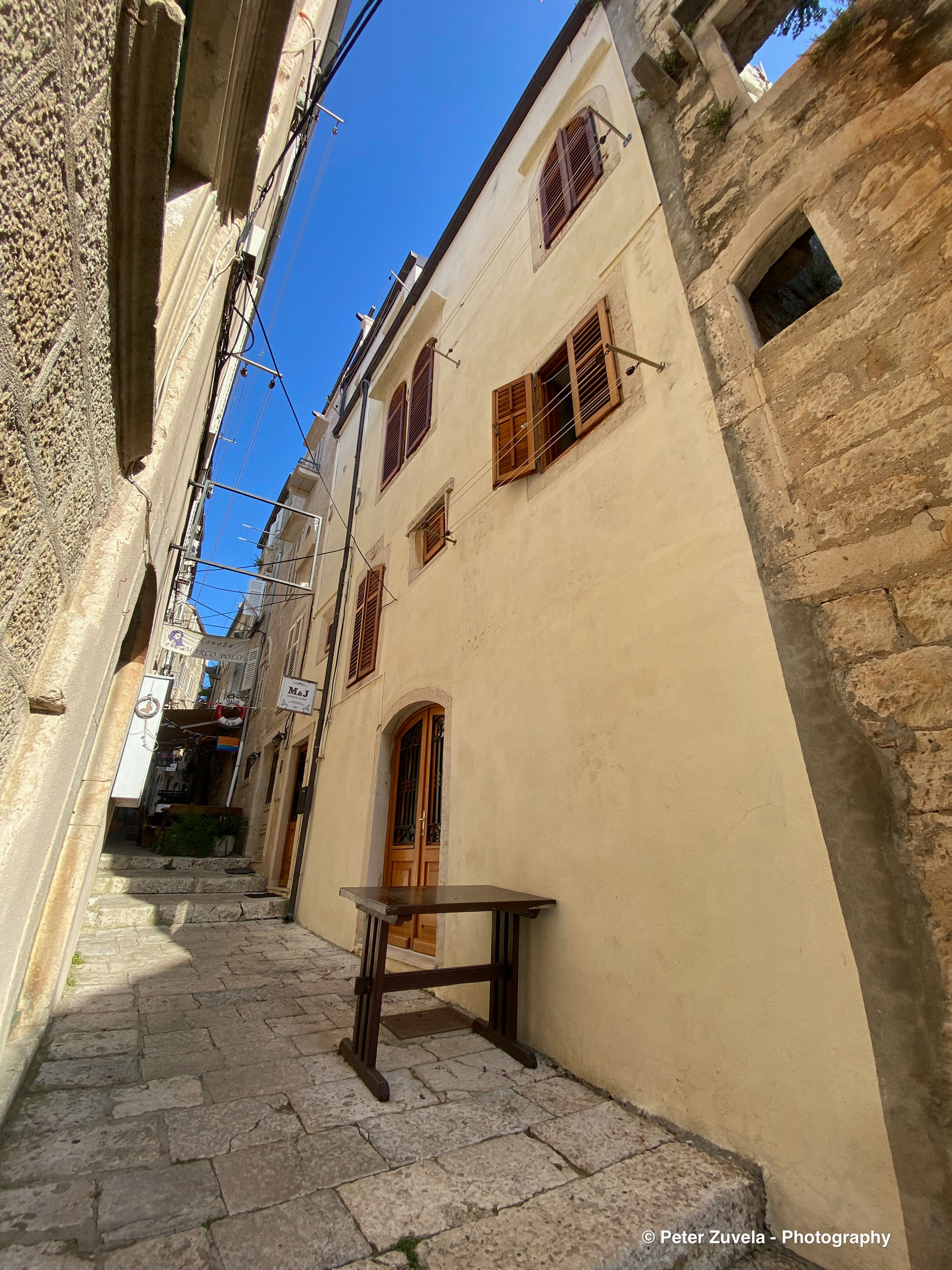
The afternoon we will rest in our accommodation inside the old town in MJ Central Suites (image above). Korčula’s restaurants specialize in charcoal grilled meat and fish. Well worth a try for a taste experience of Croatian/Dalmatian cuisine.
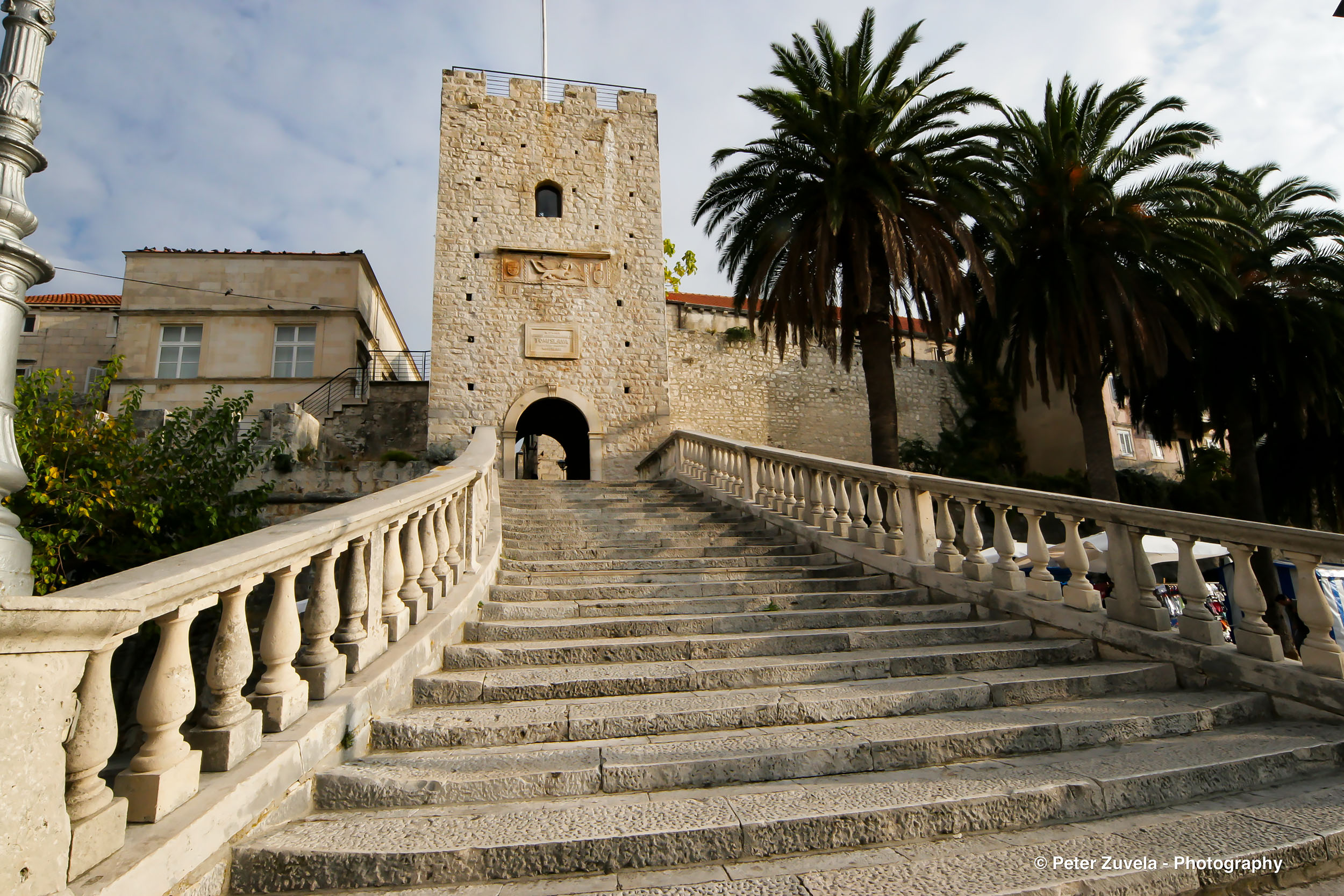
We will wander around the ancient streets of Korčula photographing the 15th century Venetian architecture, ancient churches and museums, remnants of gun emplacements to ward off historic invaders and magnificent sea views from various vantage places. After an afternoon rest, we will do a night photo tour of the ancient streets of Korčula wandering the narrow alleyways of the old town.
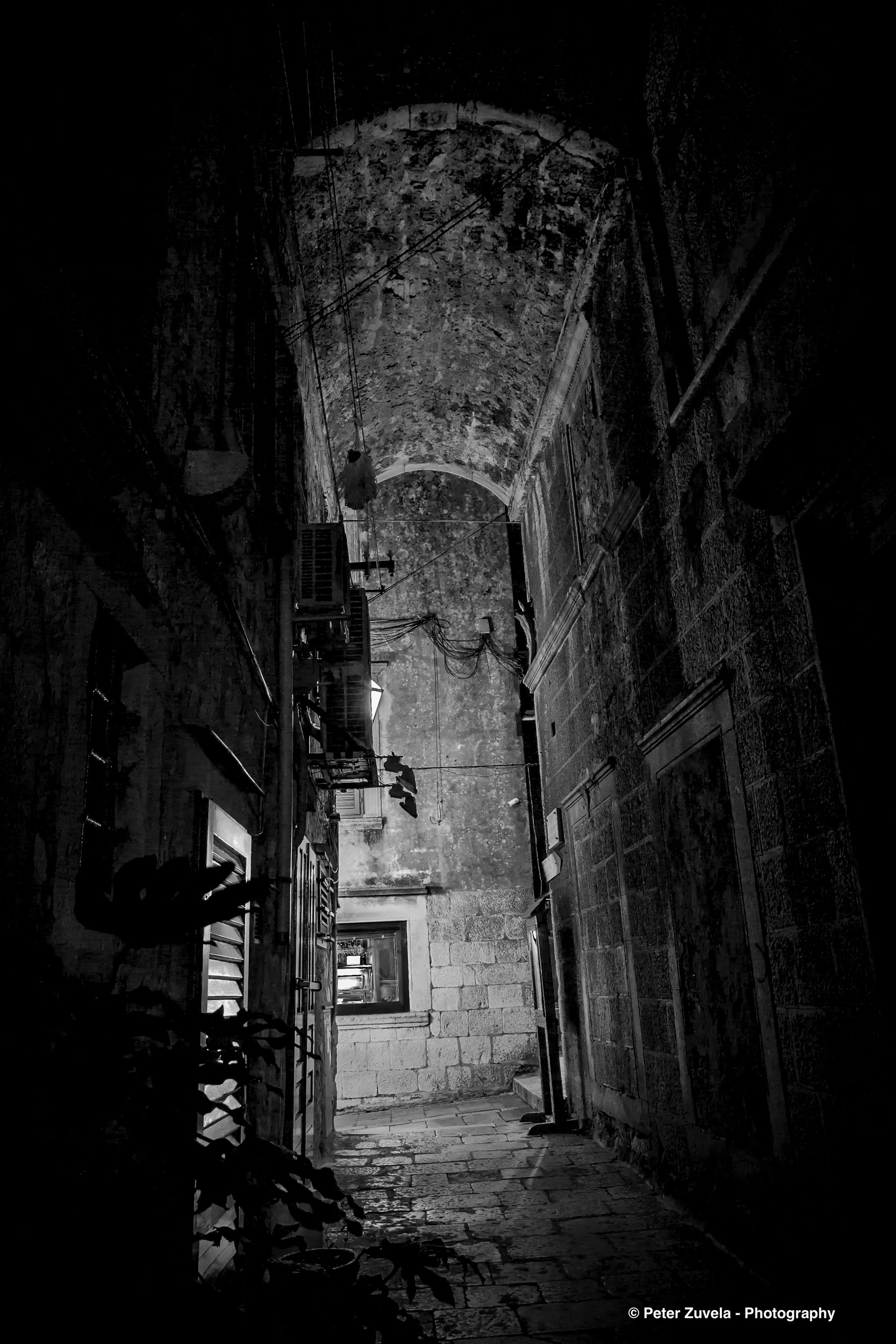
The image is of the Arch in the Street Marka Andrijica (Marco Andrych)
Named after a 15 century Korčula architect and stonemason who lived and worked in Korčula, then part of the Republic of Venice.
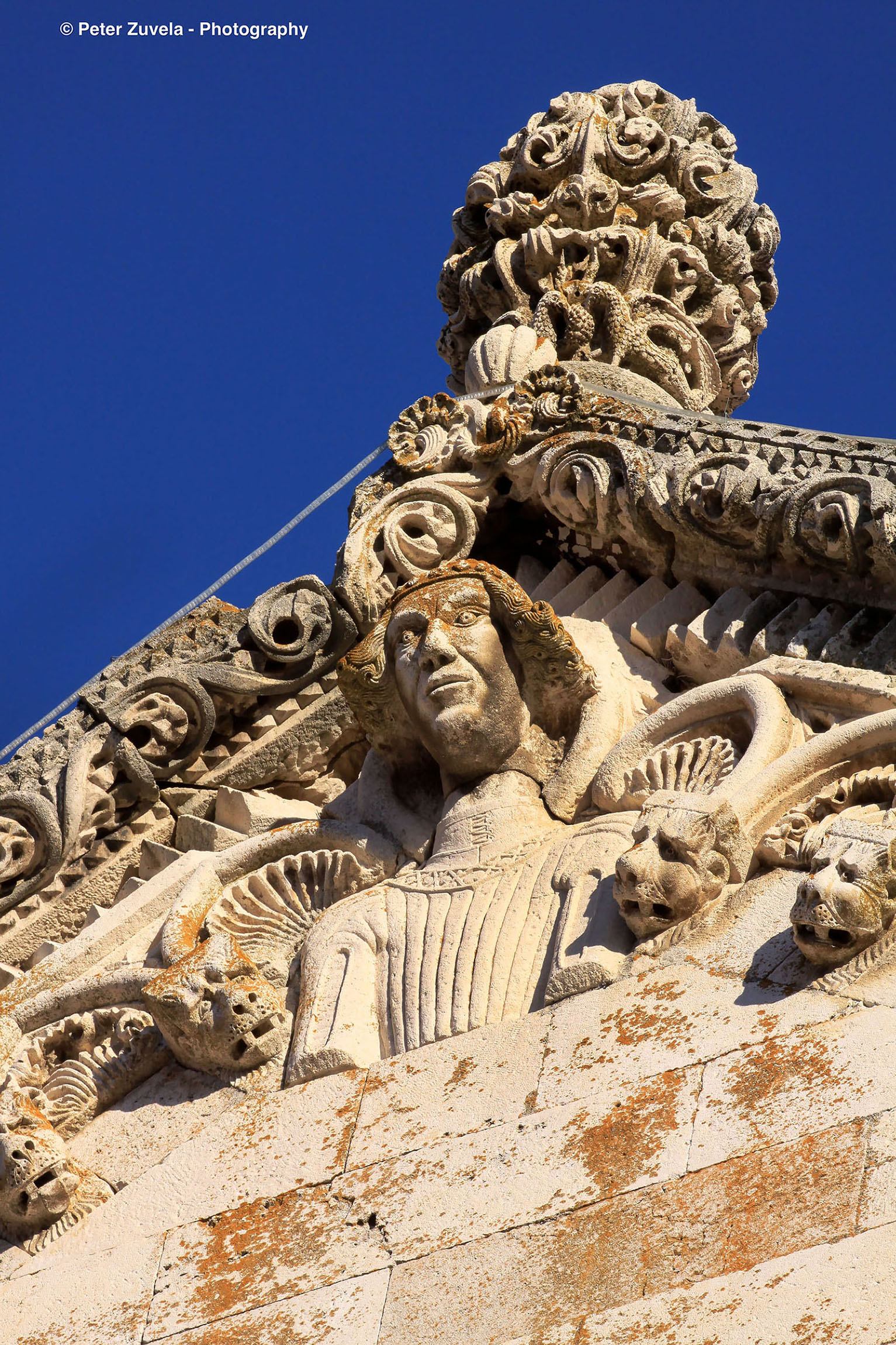
Stonemasonry work in City Centre - St Mark’s Square
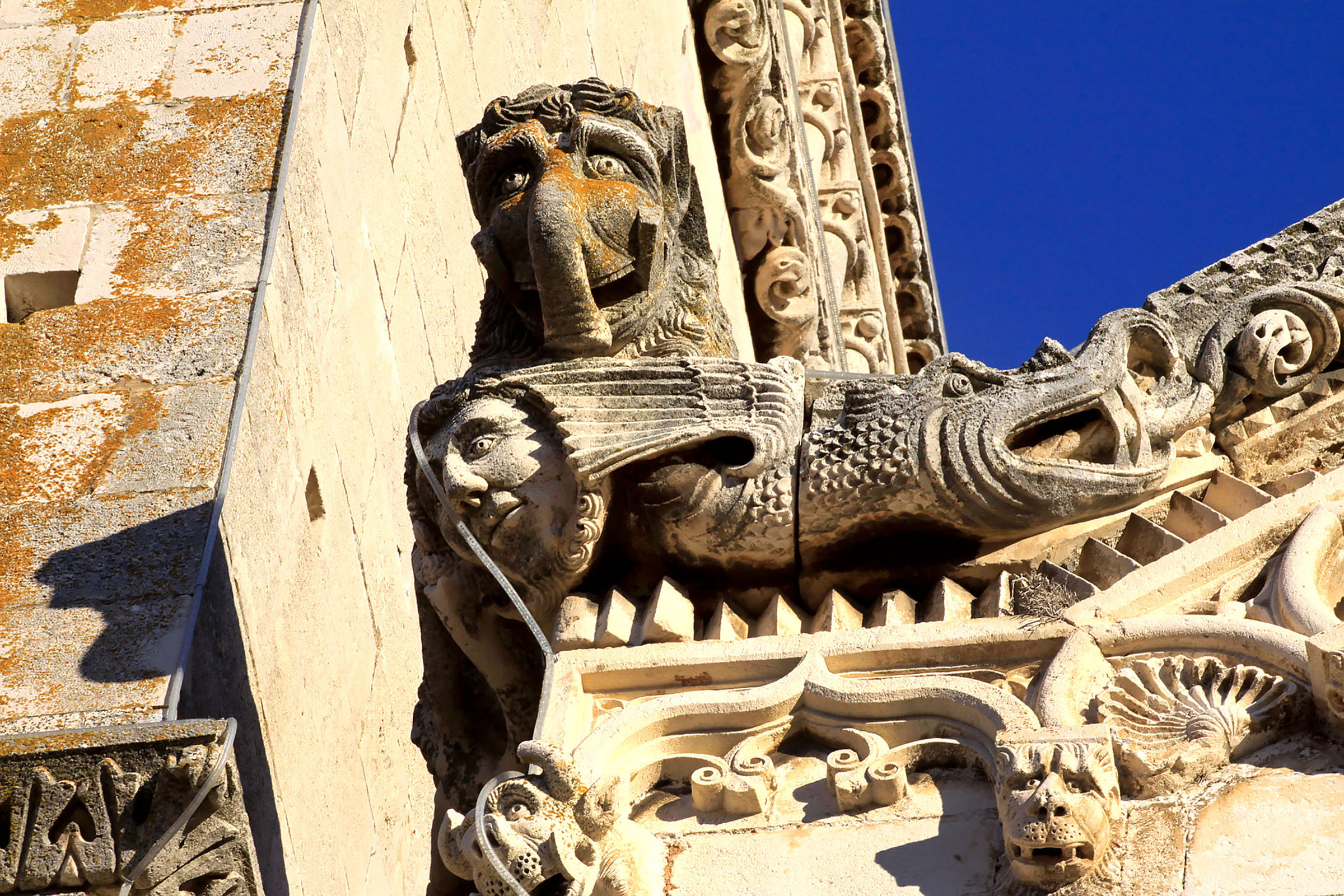
Stonemasonry work in City Centre - St Mark’s Square

We will travel by car across the centre of the island of Korčula admiring the unique dry-stone walls built in ancient times by local land owners to create pockets of soil to allow crops to be grown in this landscape. They line the hillsides and offer a truly unique agricultural solution to erosion. We will visit the old town of Blato in the centre of the island unique for its main street promenade of poplar trees that run either side of the main road through the centre of the town. In a field just outside Blato we will have a unique photo opportunity to capture images of the old stone church of St Cosmo and St Damian.


Vela Luka meaning Big Bay. Vela Luka in the past was also called Vallegrande (Latin: vallem maximam)


A visit to Vela Luka, Peter’s family home town on the far west of the island, will allow you to see a Neolithic Cave on the hill side above the town, as well as the Zuvela’s ancestral Bay of Gradina where Peter will take you to photograph his family’s circular dry-stone building (locally Vrtujak or other names Rotunda/Trullo) located in the vineyards on their family farm.
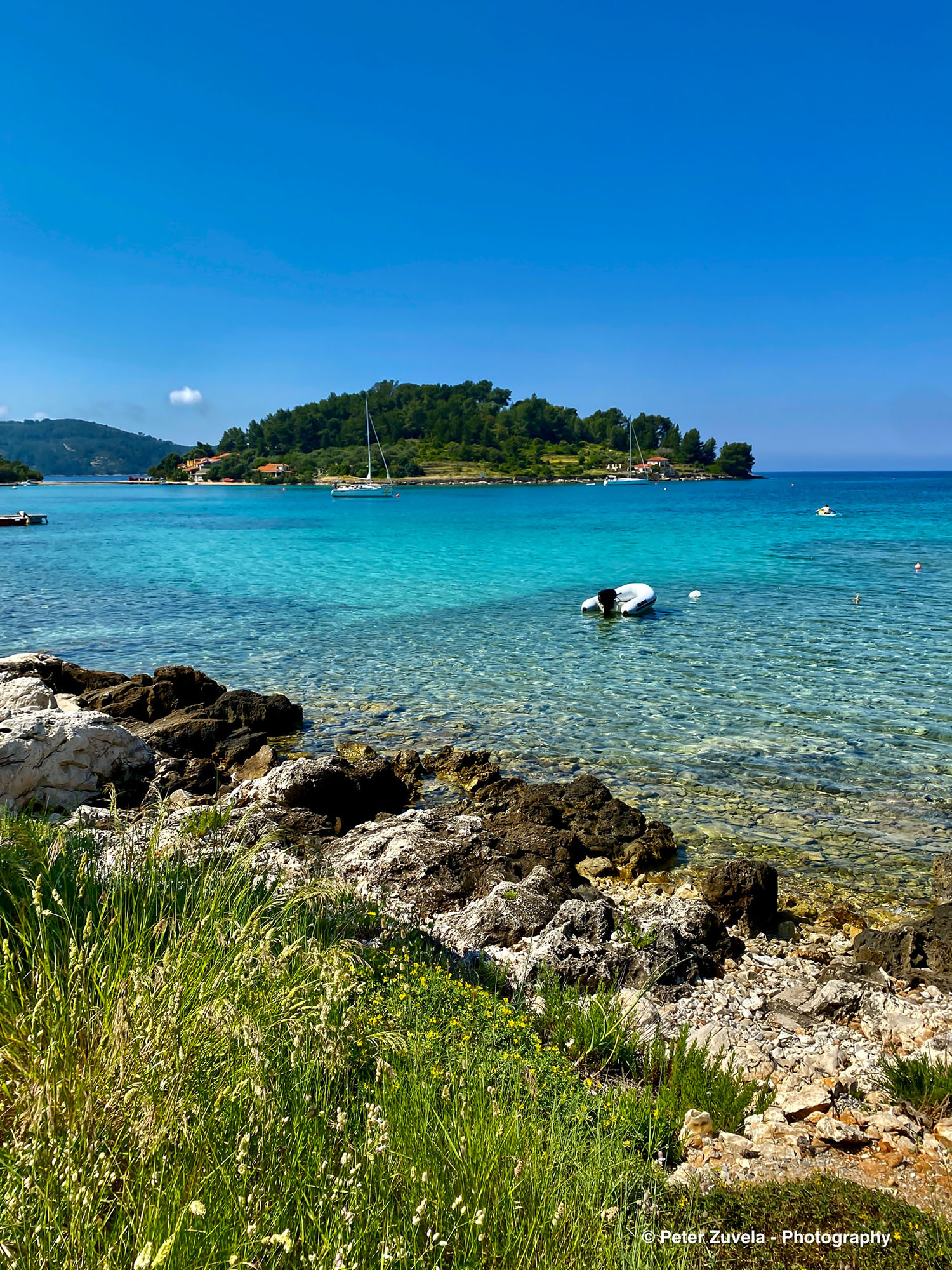
The Bay of Gradina - in the distance the island of St Ivan (St John)
The Rotunda is a very old and distinctive structure constructed of stacked stone with a stone roof and no mortar used by early farmers as a shelter and storage area when working in their grape and olive groves. We will travel back to Korčula for the night.
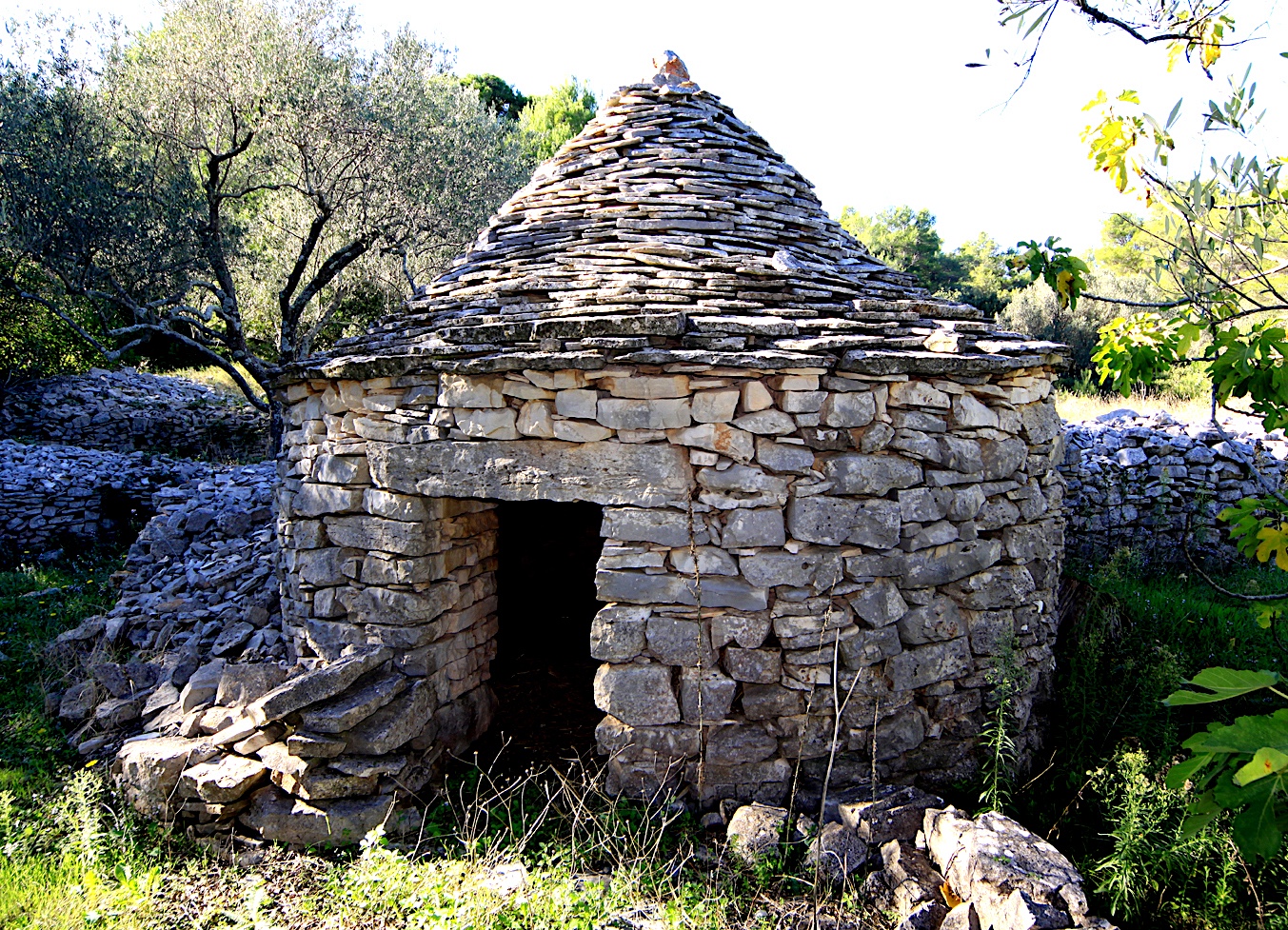
Zuvela family’s circular dry-stone building in the field called Bradat
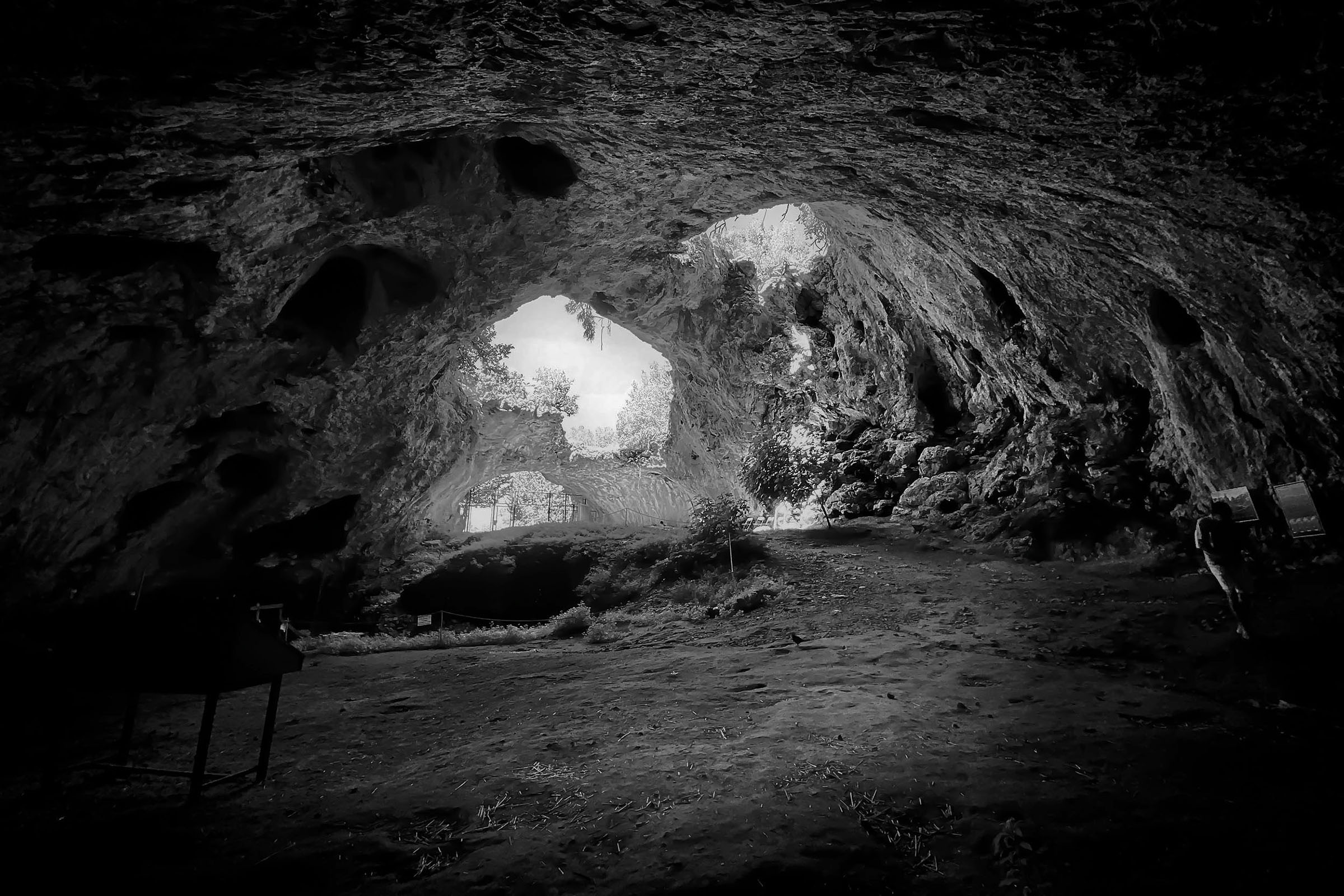
The Big Cave (that's the name) above Vela Luka
Wikipedia: There is an unbroken sequence of sediments from the late Mesolithic to the Neolithic. Radiocarbon dated finds suggest seasonal human presence for hunting and the collection of marine resources from 20,000 years BC. Three child burials were discovered between 1986 and 1998 in the younger Mesolithic layers. Further findings are dated between 13,500 and 12,600 BC.
 View from the island of St Ivan in Gradina Bay
View from the island of St Ivan in Gradina Bay
DAY 9 3rd of OCTOBER – FRIDAY
We travel by fast ferry to the beautiful City of Dubrovnik with its fortified stone walls and distinctive orange tiled roofs. Settling into our accommodation in Dubrovnik (once the capital of Republic of Ragusa).
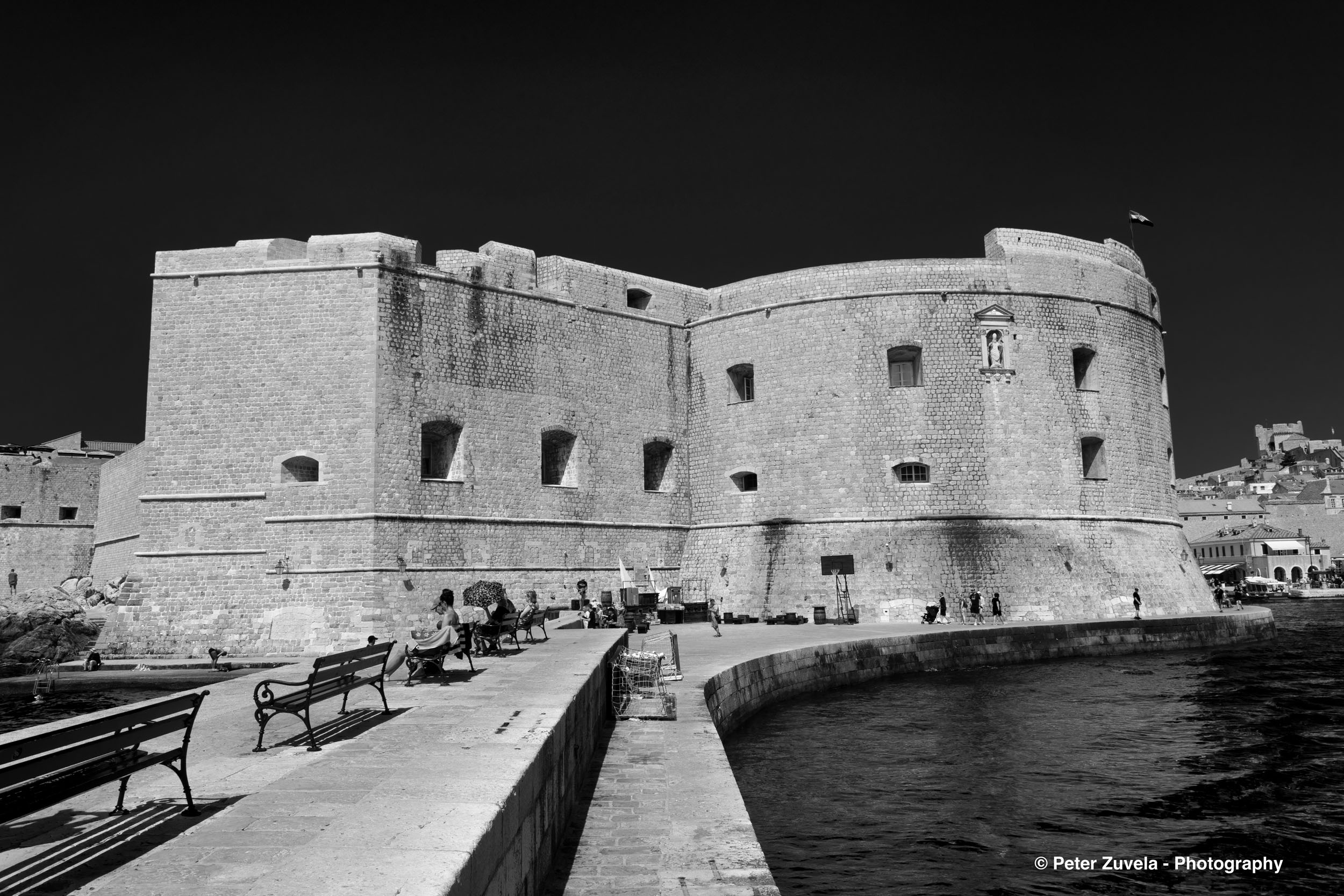
Image of Dubrovnik’s massive walls
Photo taken from Porporela (breakwater wall). Dubrovnik (formerly Ragusa), a city state then a Republic with Roman/Illyrian origins.
DAY 10 4th of OCTOBER – SATURDAY
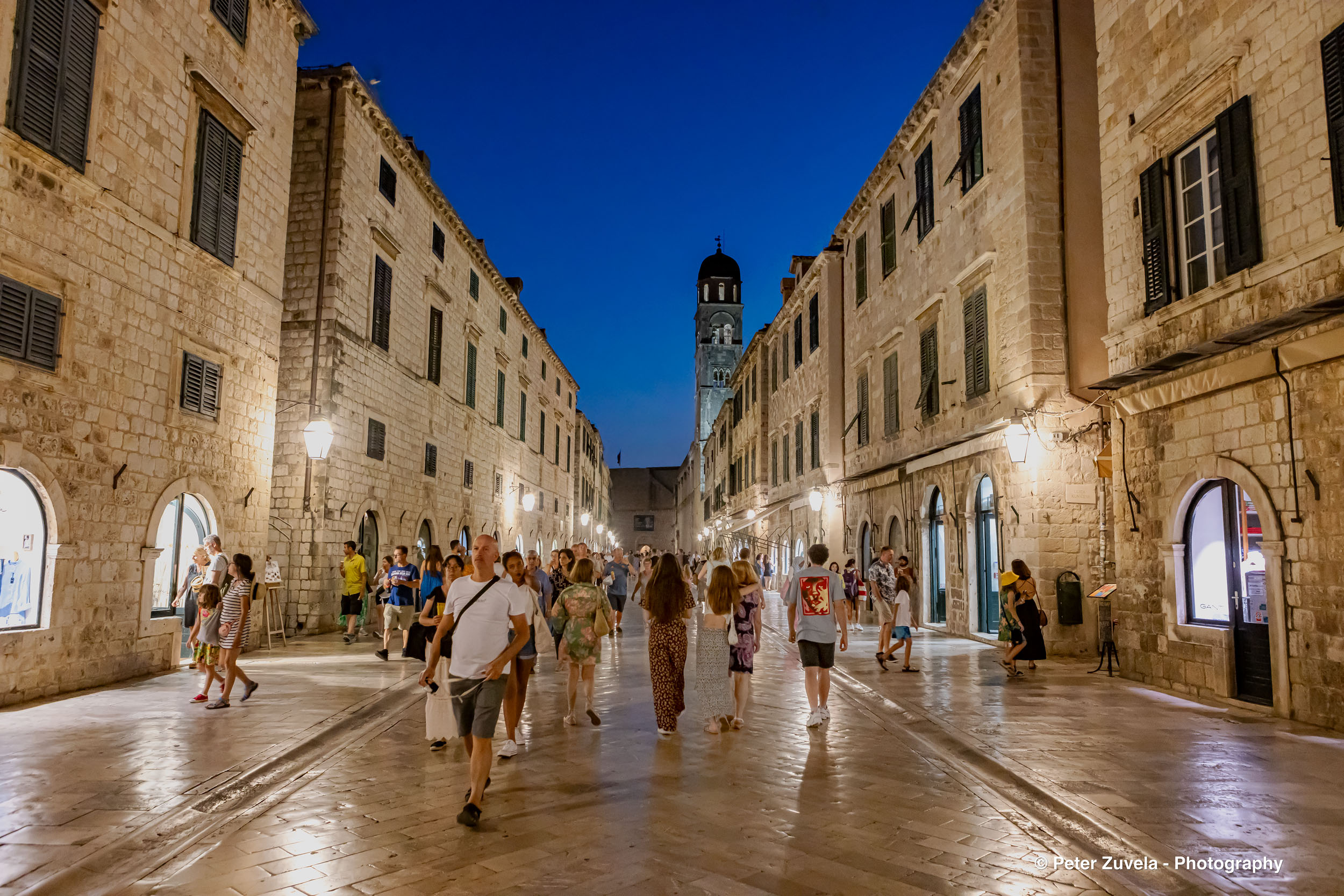
Dubrovnik's Stradun
We will walk the fortified stone walls of Dubrovnik and explore the ancient streets of the old town centre. Optional trip to the island of Mljet or other neighbouring islands.
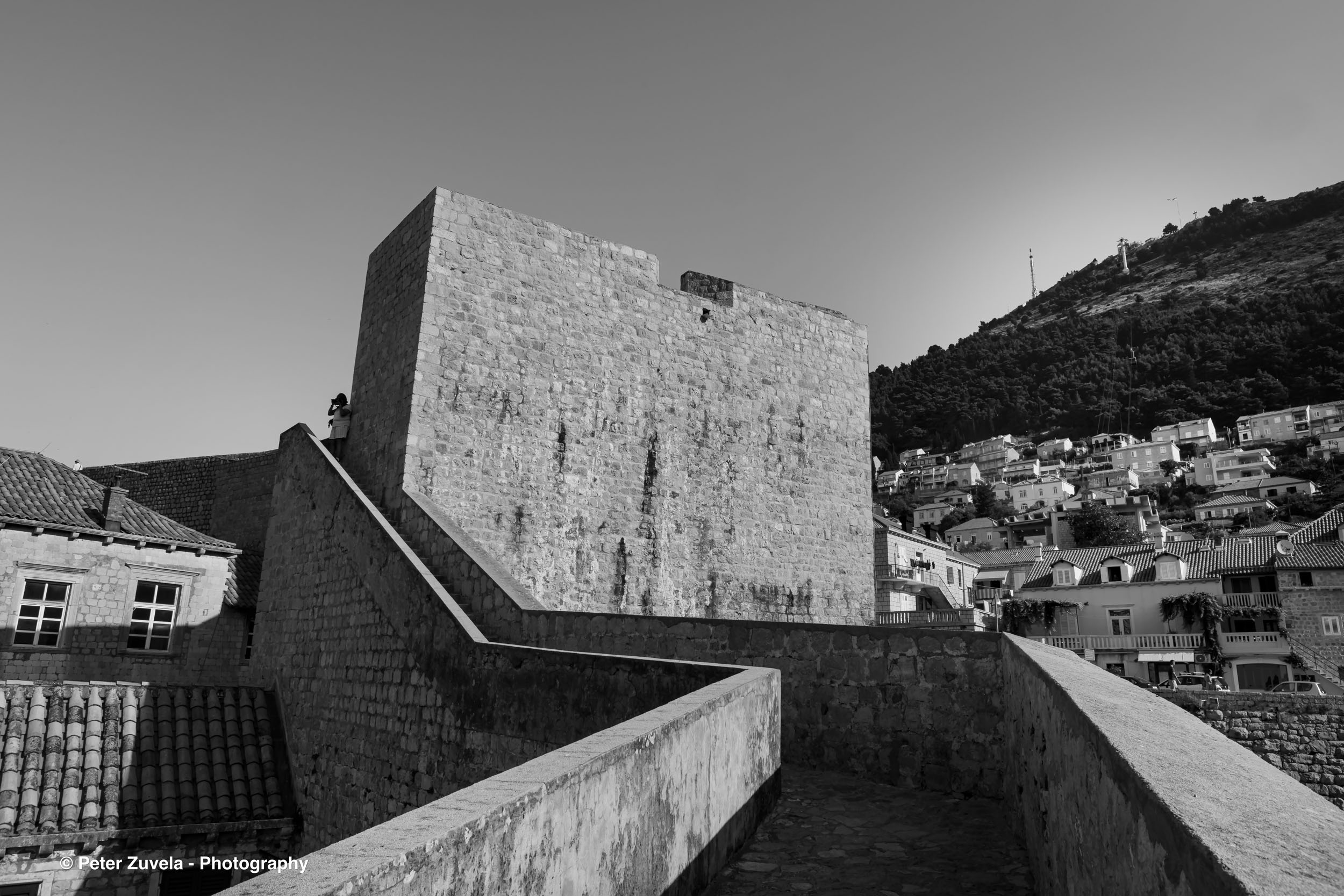
Fortified stone walls of Dubrovnik
The walls offer great opportunities for photography to capture city and ocean views with the cluster of islands on the horizon and the vantage points offered on the wall journey to view the boats moored on the shore line and streets and old buildings from an elevated view point.
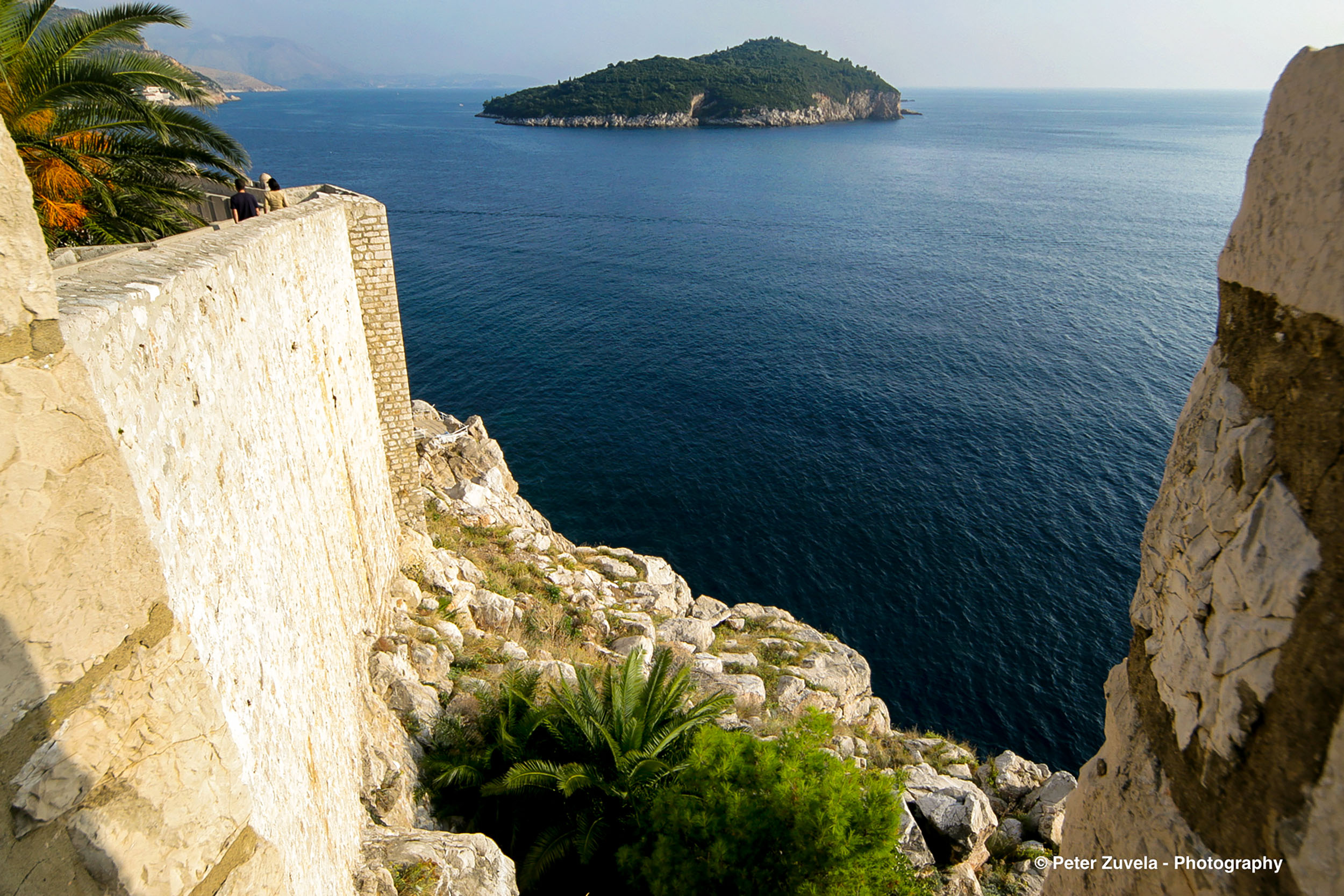
Southerly east view from the Walls of Dubrovnik with the island Lopud
DAY 11 5th of OCTOBER – SUNDAY
We will take the Cable Car up to the top of Mount Srd located above and overlooking Dubrovnik. Wonderful elevated photo opportunities will be explored with panoramas of the roof tops of Dubrovnik and distant sea and island vistas available.

View of Dubrovnik from Mt Srd

The Cathedral of the Assumption of the Virgin Mary
DAY 12 6th of OCTOBER – MONDAY
End of tour. Closest airport is the Dubrovnik Airport
For more info please email:
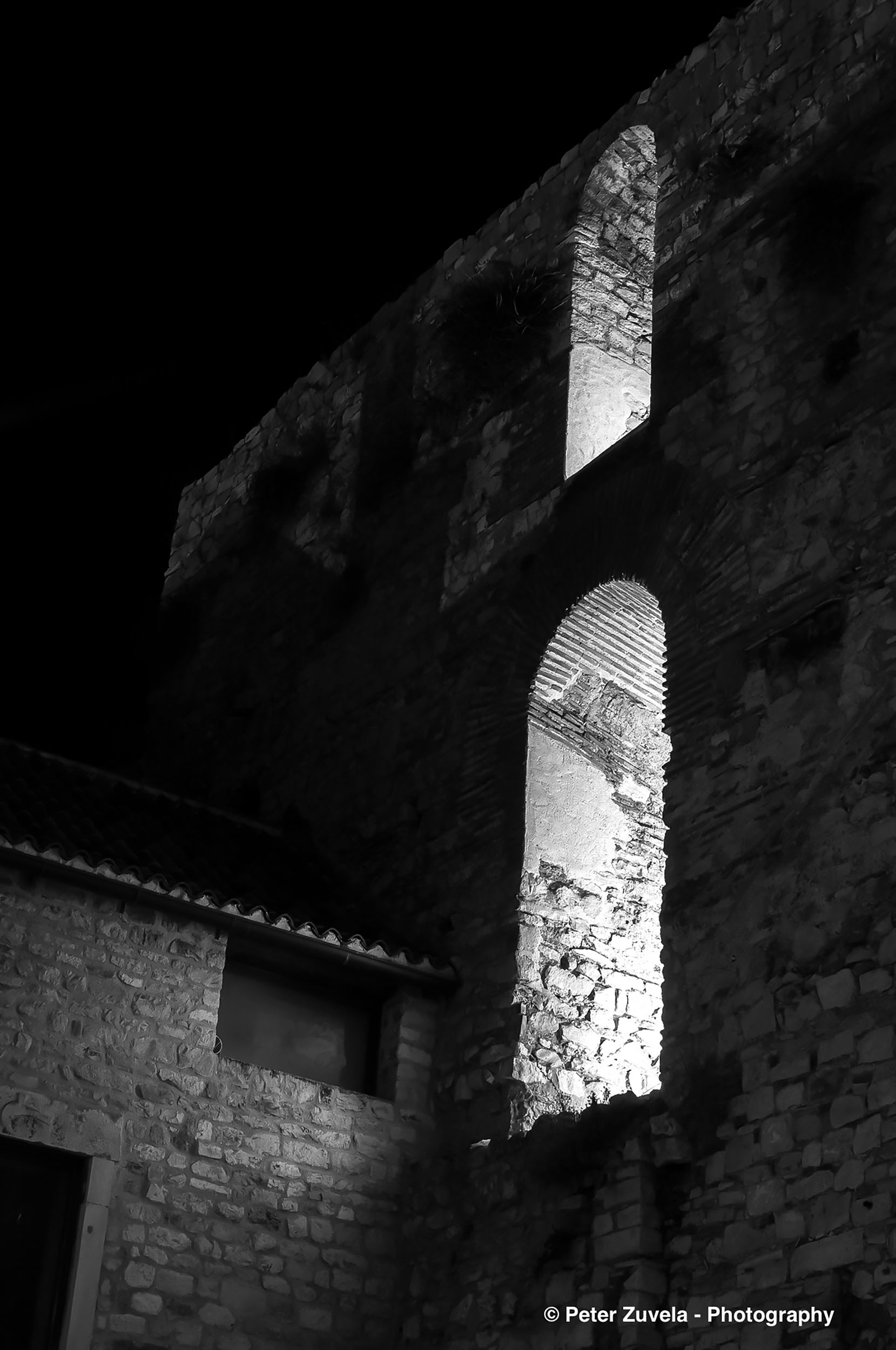
TOUR HIGHLIGHTS
Very small group Learn at your own pace one on one
Hand-picked BEST locations
Led by an experienced photographer/guide/tutor – Peter Zuvela
Truly authentic travel experience - a trip of lifetime!
Staying in accommodation from the old Venetian era
Watching the sunset from below the walls of Korčula
Exploring the dramatic land and seascapes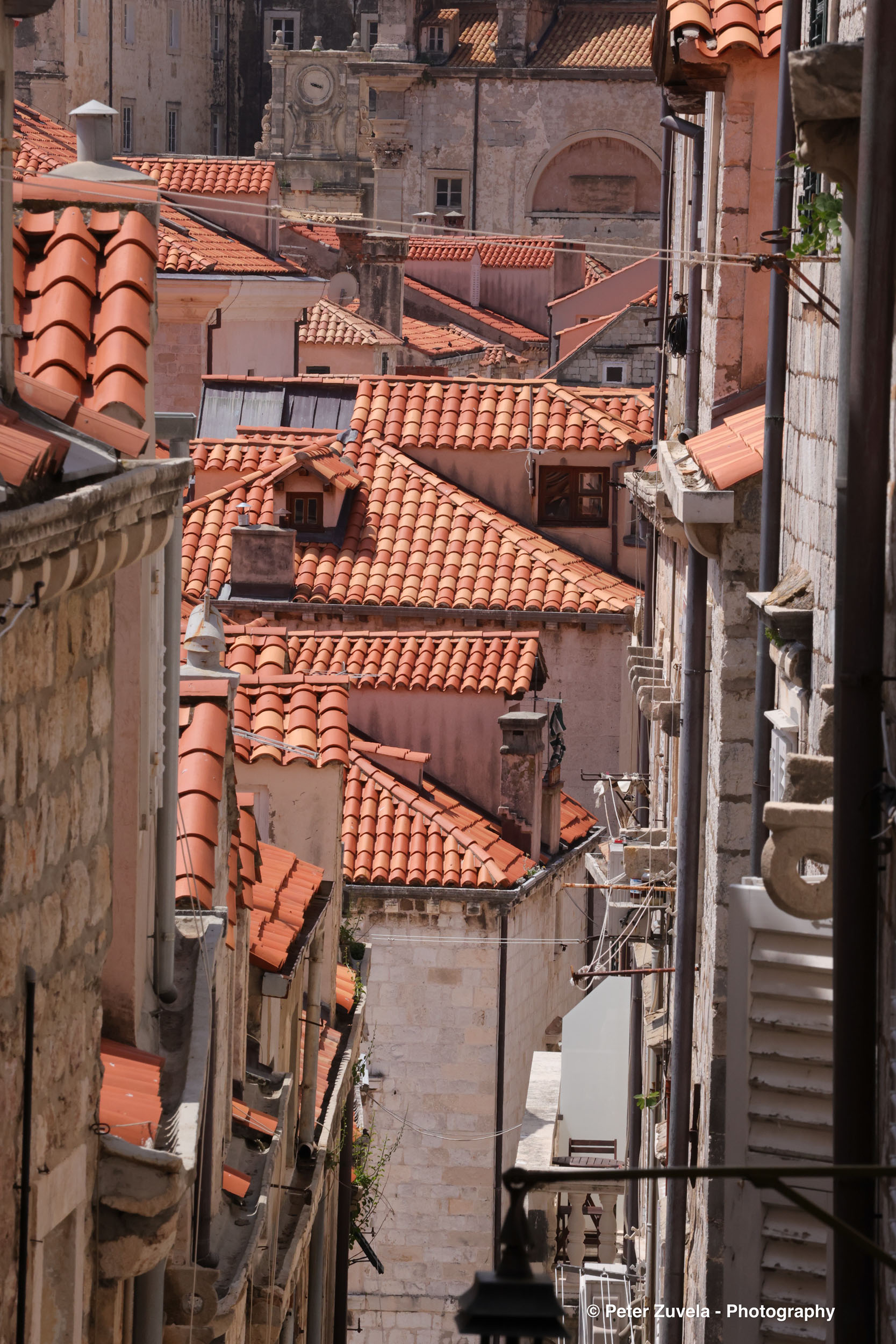
WHAT TO BRING: PHOTOGRAPHIC & GENERAL GEAR
DSLR or mirrorless digital camera
24 to 70mm lens as well as telephoto 70 – 200mm lens
Wide angle lens 18-24mm range optional
Tripod & Cable Release
Dependable Portable External Drive
Laptop and power supply
Adobe Lightroom or Photoshop
ND Variable Filters
Up to 20 kg luggage and appropriate clothing
Moderate level of fitness is required and some uneven surfaces
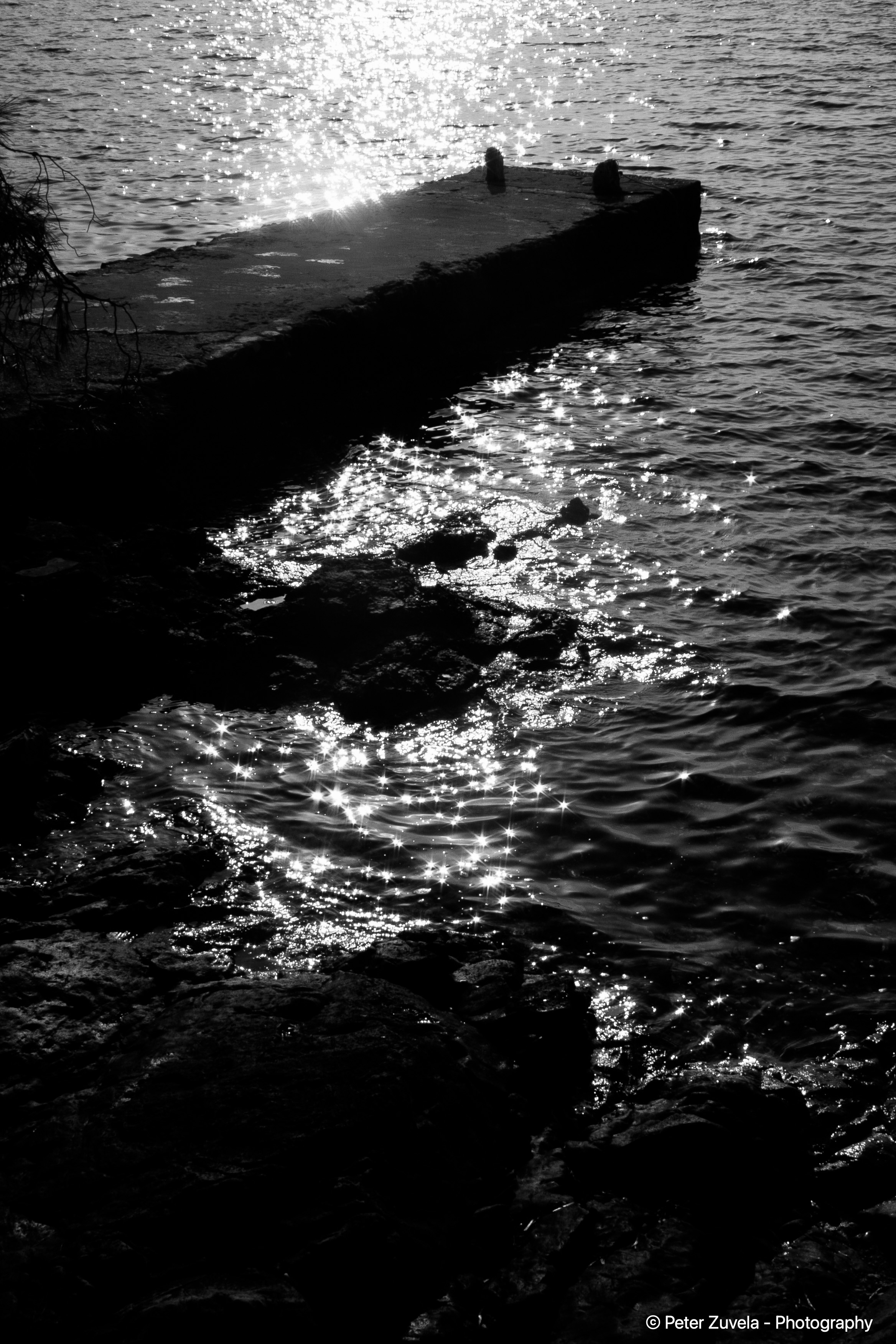
WE WILL LEARN:
Master Composition
Streetscape Photography
Landscape Photography
Seascape Photography
Waterfall Photography
Advanced Editing Techniques

DEPOSIT AND CANCELLATION POLICY (PER PERSON)
A deposit of 25% per person is required to secure a booking.
Via bank Transfer or Credit Card (fees apply to credit card payment)
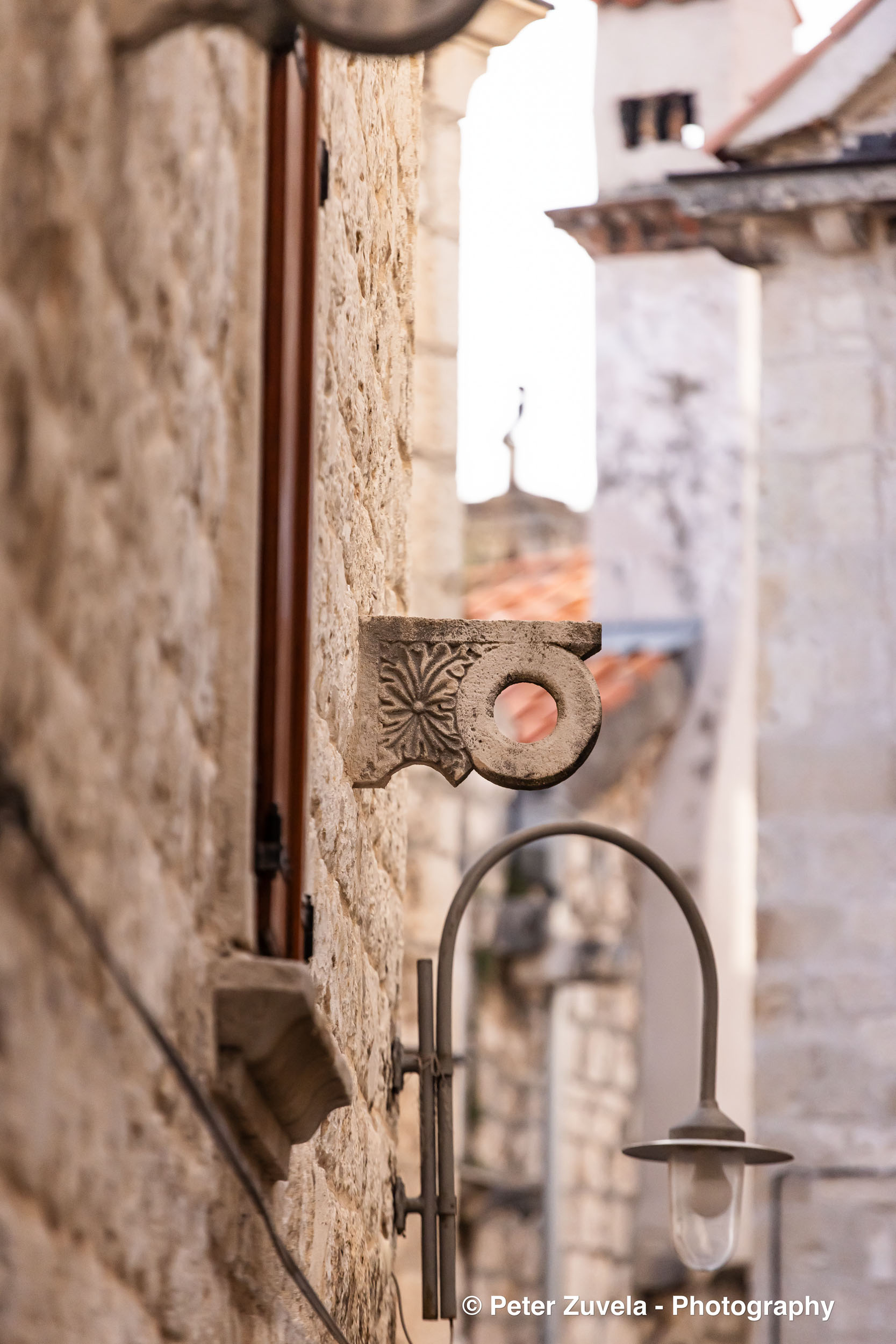
Cancellation Policy
Final payment is due 180 days before the workshop/trip starts.
Late enrolments accepted on negotiation.
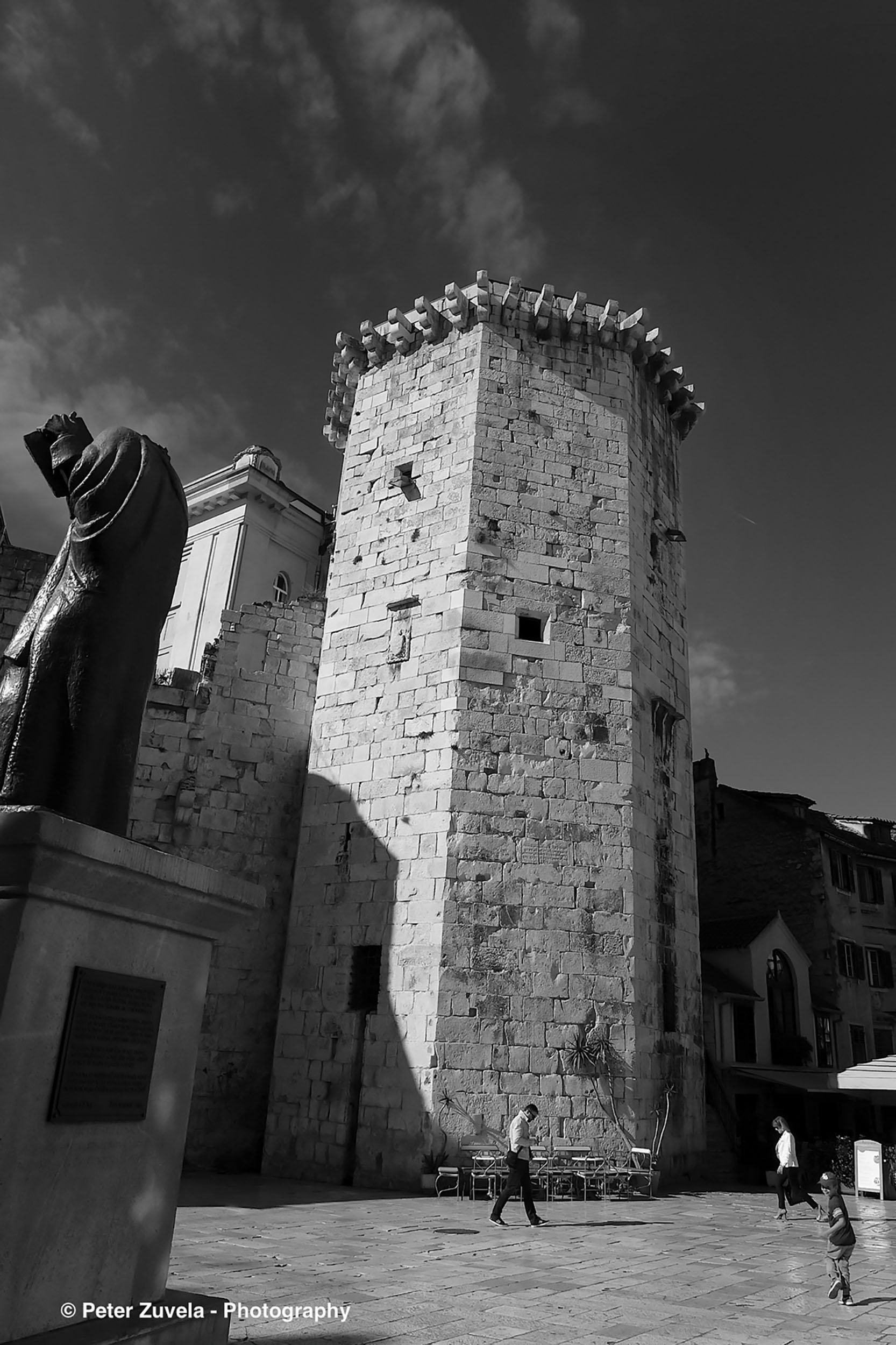
Venetian Fortress in Old Split also know as the "Venetian Castle" was a medieval castle built during the 15th century in Split.
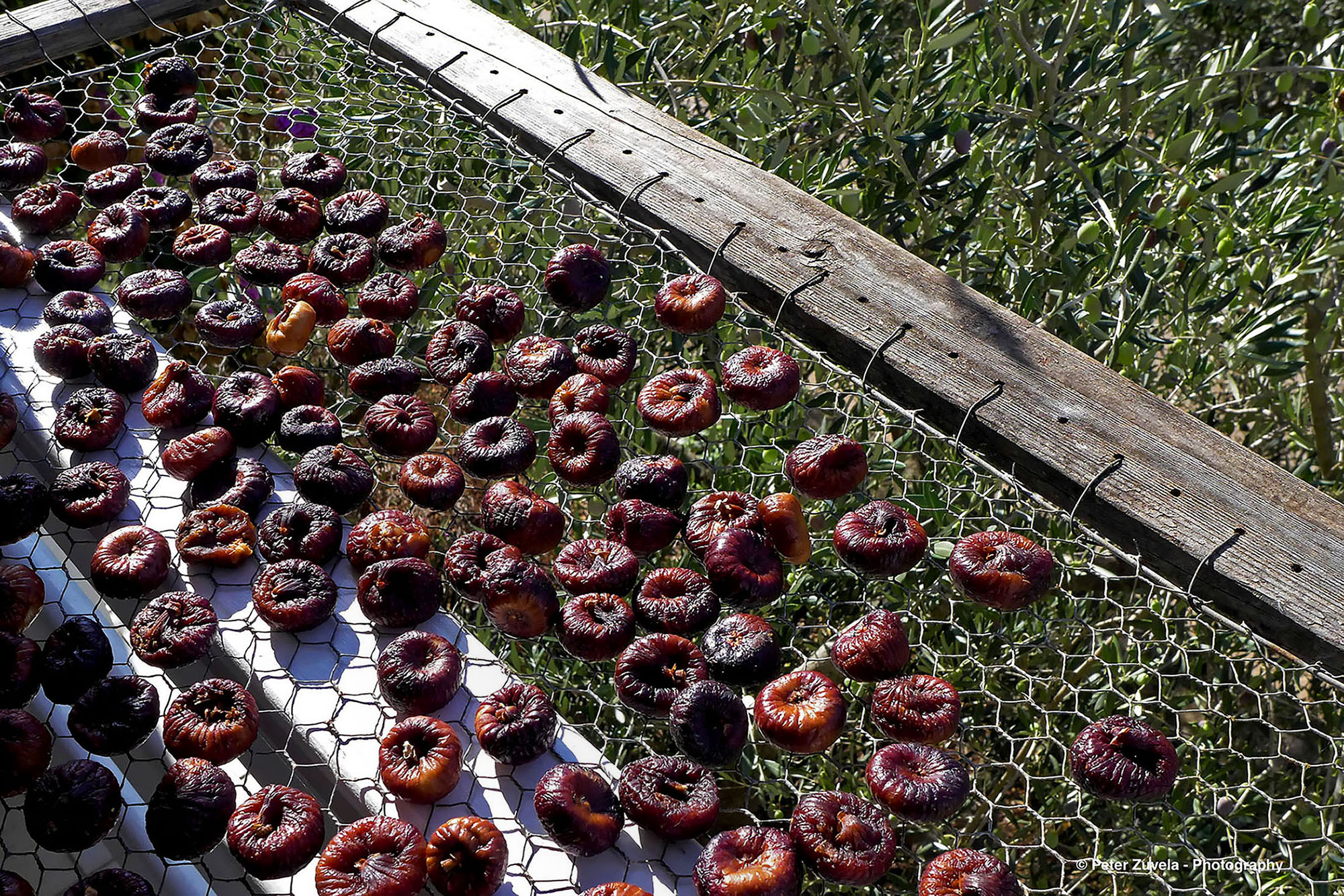
Dry Figs in Gradina on the Island of Korčula

Trip Advisor Reviews Perth (Fremantle) Photography Tours run by Peter Zuvela (PHOTO TUTOR) working with Alfonso Calero.
“A great way to see the sights of Freo and learn a lot about photography!” “An experience not to be missed for any Photographer” "Great friendly service." "Being in Perth for a short time it was the best way to improve my photography skills and see the sights of Fremantle." "Peter is a wealth of knowledge with the local history and historical sights" " “Highly recommend this fun photographic experience.” This is a terrific opportunity to learn about digital photography . Thanks to Peter for being such a great host patient teacher. I recommend anyone who needs to learn about their camera and digital photography to take this course. Thanks again Peter!
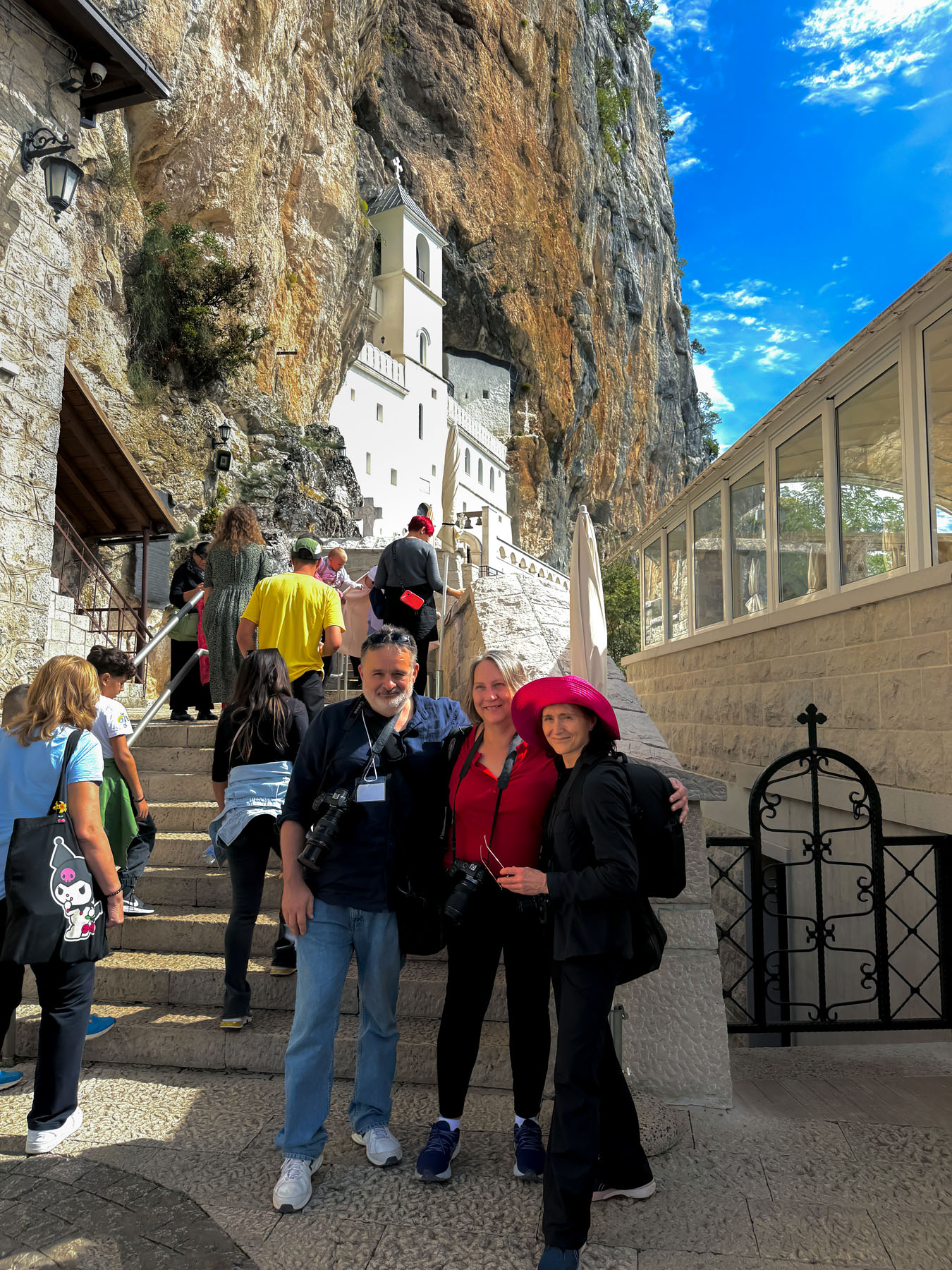
On tour with Peter Zuvela in Montenegro